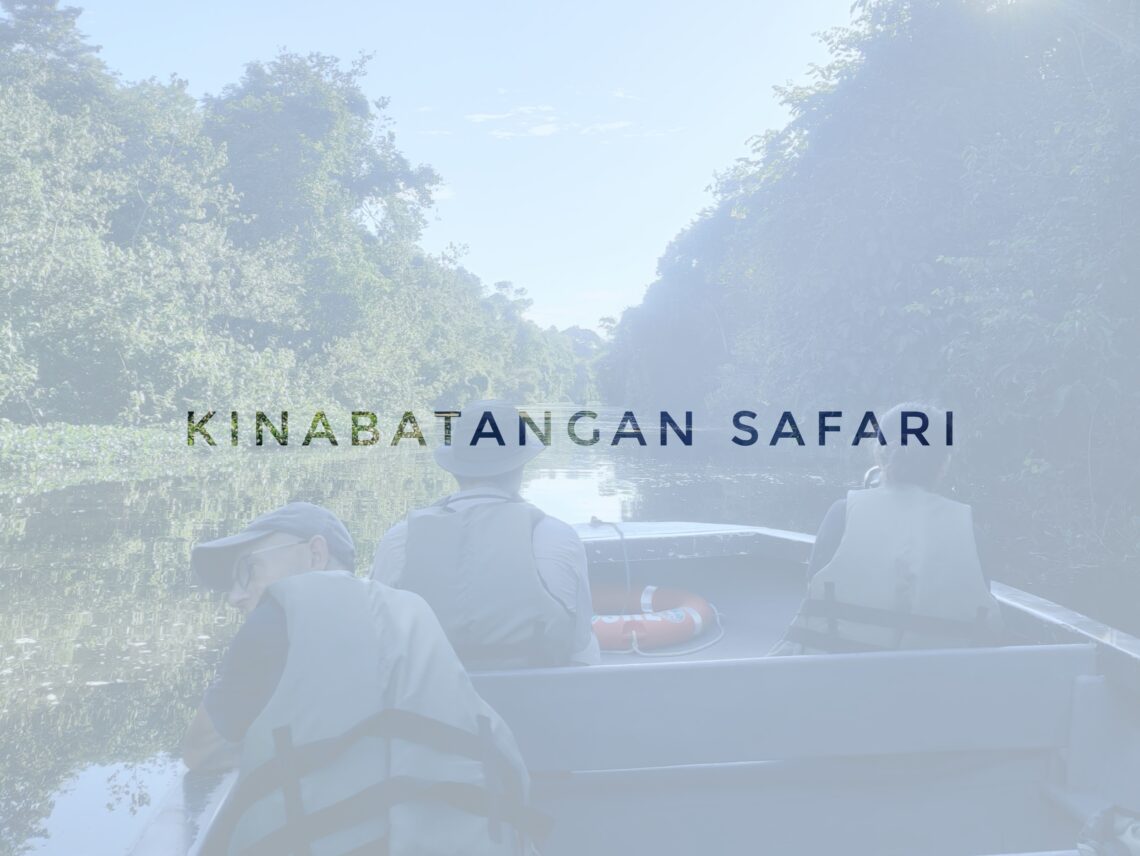
The Kinabatangan Wildlife Safari Cruise
A 2.5hrs boat ride away from Sandakan and we are on the Kinabatangan river to start our wildlife river safari!
What wildlife can be spotted around the Kinabatangan river?
The Kinabatangan River flows through Sabah, eastern Malaysia, on the island of Borneo. It is Malaysia’s second longest river, stretching 560 kilometers from its source in the mountainous regions of southeastern Sabah to its mouth in the Sulu Sea east of Sandakan.
- Proboscis monkeys
- Orangutan
- Gibbons
- Bornean pygmy elephants
- Tarsiers
- Slow loris
- Macaque monkeys
- Crocodiles
- Hornbills
- A variety of other birds
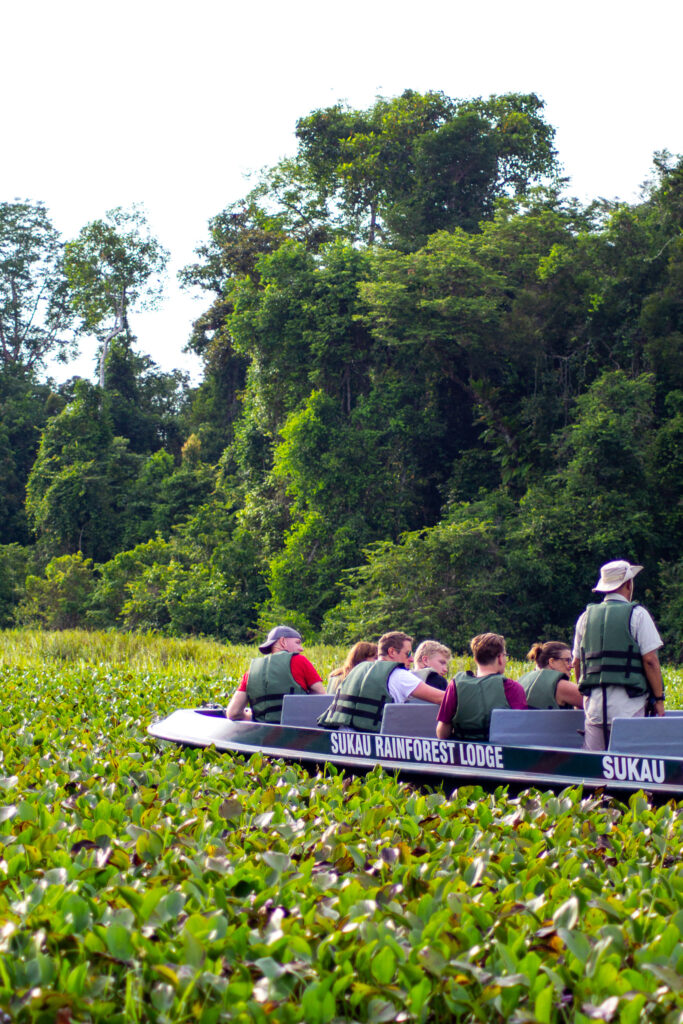
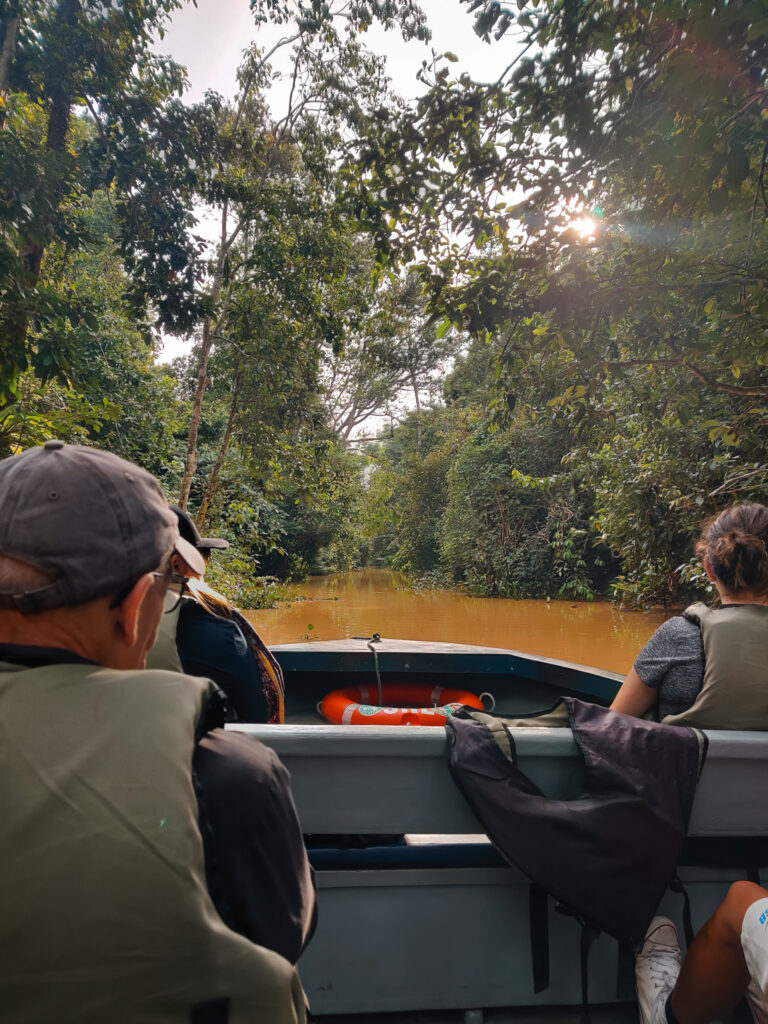
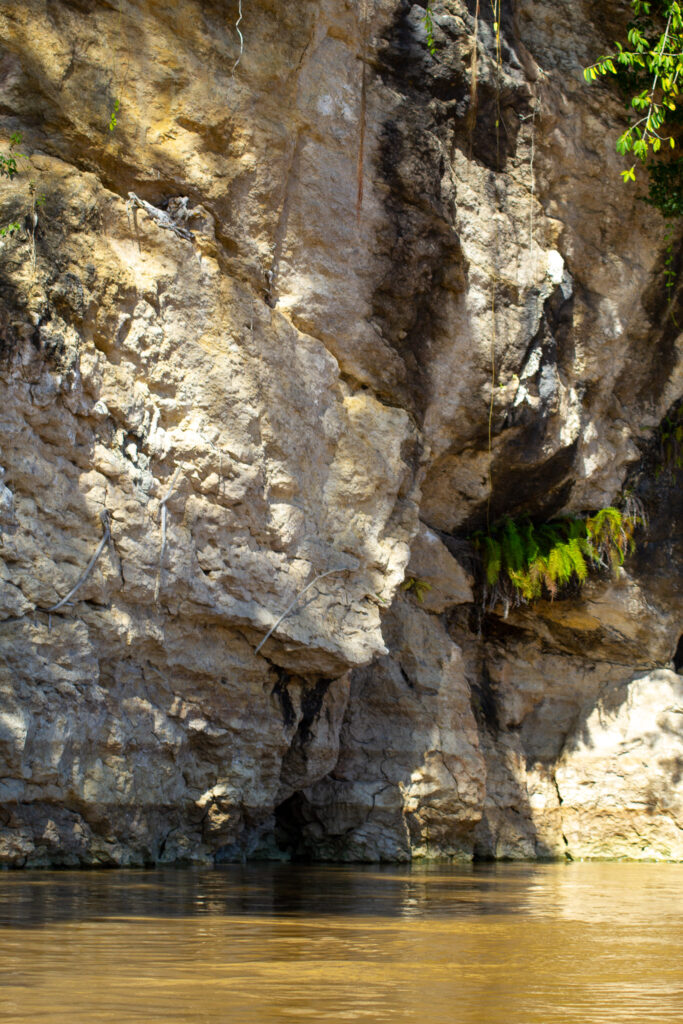
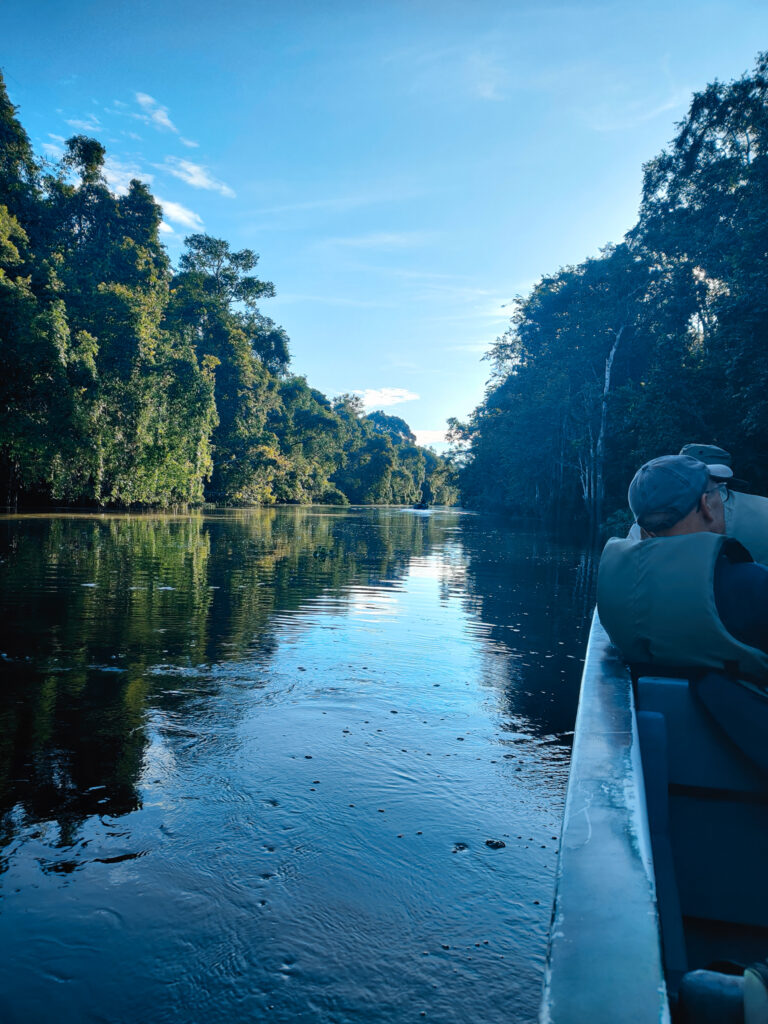
Guide
You can do river safaris with the lodge that you have booked. For us we had our river safaris organized by the Sukau Rainforest Lodge. Boat safaris are such a great way to witness the magical nature show, and as you’re sitting on a boat all the time, it’s possible for anyone of any age to participate.
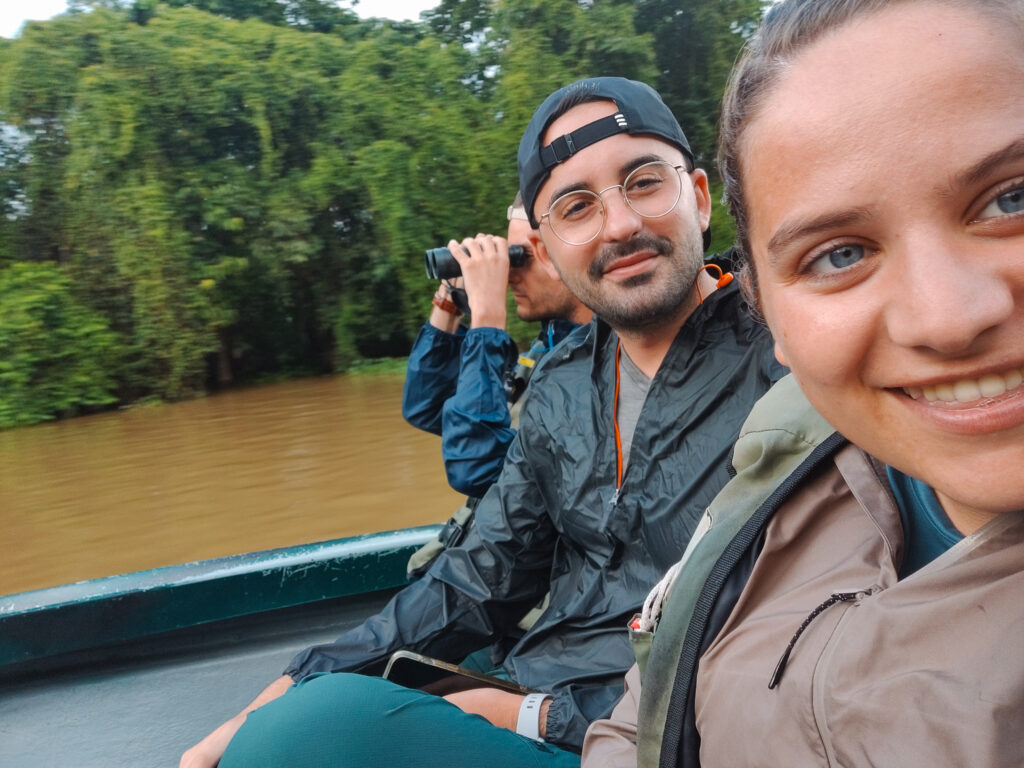
Get up early or sleep in
The best safaris are the ones in the early morning or late afternoon. That’s when the animals are most active. Around noon, all animals will take shelter to keep cool.
Each tour based at Sukau Rainforest Lodge includes two daily boat safaris conducted on electric motored boats (to reduce noise pollution and stress to wildlife), one at dawn and one in the afternoon, to maximize your opportunities to spot orangutans and the other animals.
It’s also possible to go on a night cruise for a small surcharge to see owls and other species that aren’t spottable in the daytime. I almost fell asleep during the night cruise just because you have to be silent, look in the dark, and you’re already exhausted from my day activities. But nice to do this once.
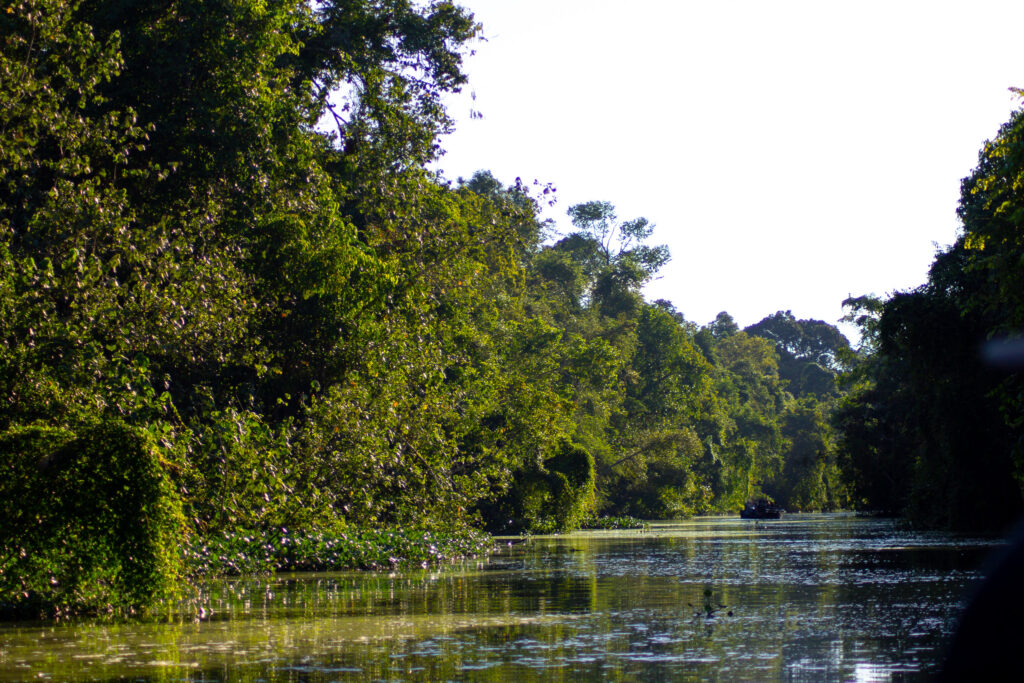
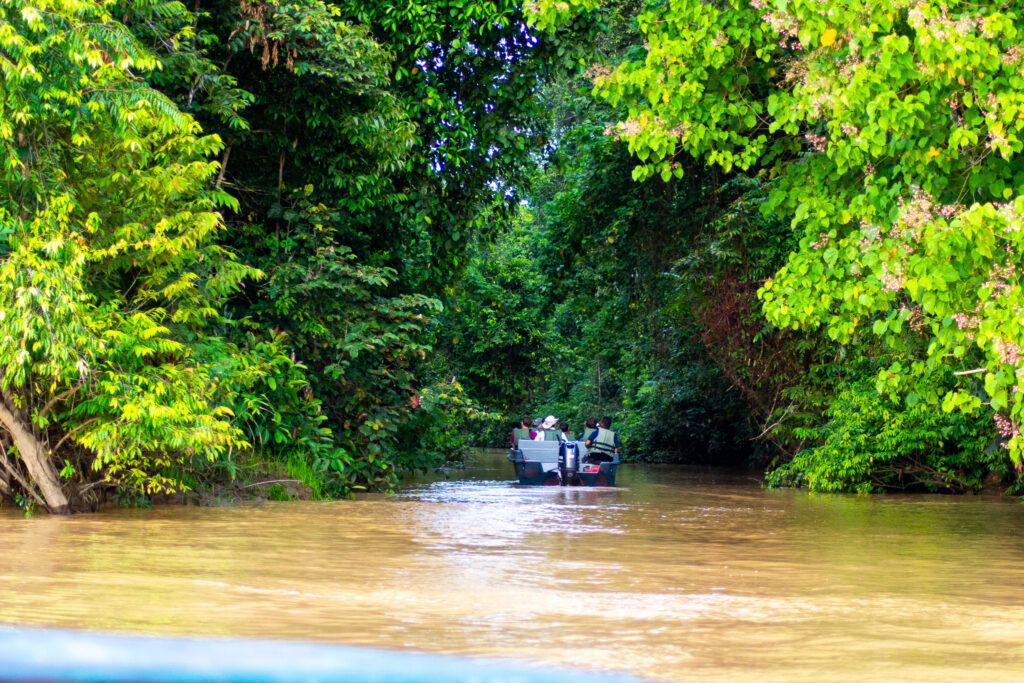
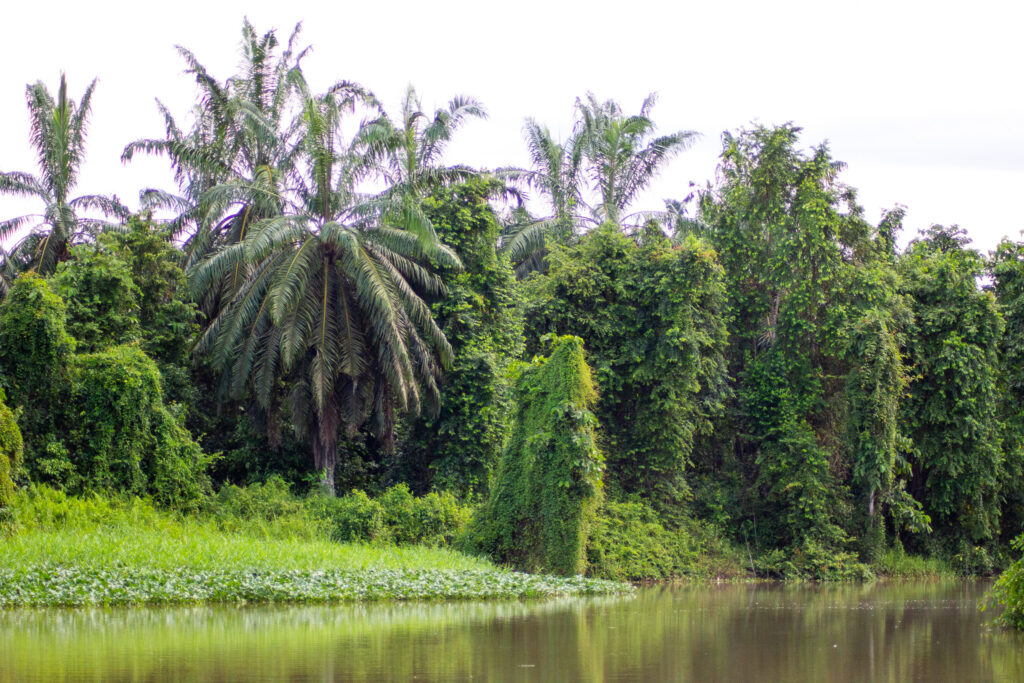
MALARIA in Borneo?
This is a personal choice. I was advised by my doctor to take Malarone however some friends of mine didn’t take them. I already took them whilst in Kenya and Indonesia and never have experienced side effects from it. The staff at the Lodge told me that the risk has been lowered to “low to none” for the Kinabatangan area. There hasn’t been any malaria case in many years in the area.
Still, it’s very important to use long-sleeved shirts and long pants, especially after dark, and to use mosquito repellant with DEET all the time (dengue is also a risk).
Bring along…
- Bottle of water
- Binoculars
- Sweater (dawn safari & night safari)
- Camera & Smartphone
- Sunglasses (afternoon ride)
Let’s go do some safaris on the Kinabatangan river!
We did an afternoon, dawn, and evening river safari! What did we see? See for yourself!
1) Proboscis monkeys
The proboscis monkey or long-nosed monkey is a monkey with an unusually large nose, a reddish-brown skin color and a long tail. These monkeys co-exists with the Bornean orangutan. The proboscis monkey is an endangered species due to ongoing habitat loss because of logging and oil palm plantations, and hunting in some areas due to the species being treated as a delicacy, as well as its use in traditional Chinese medicine.
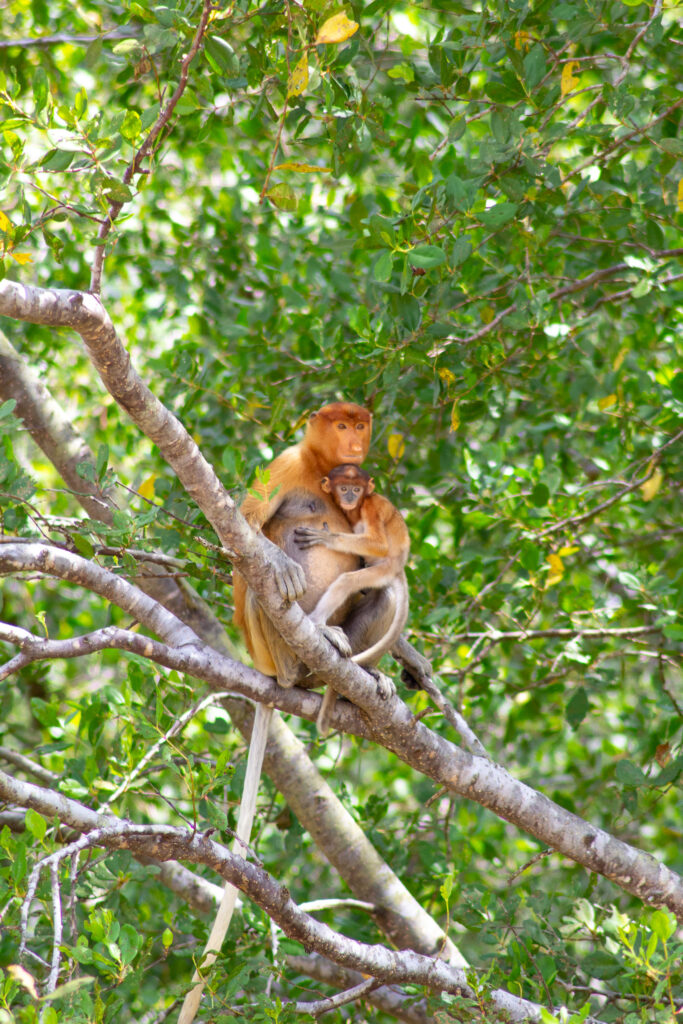
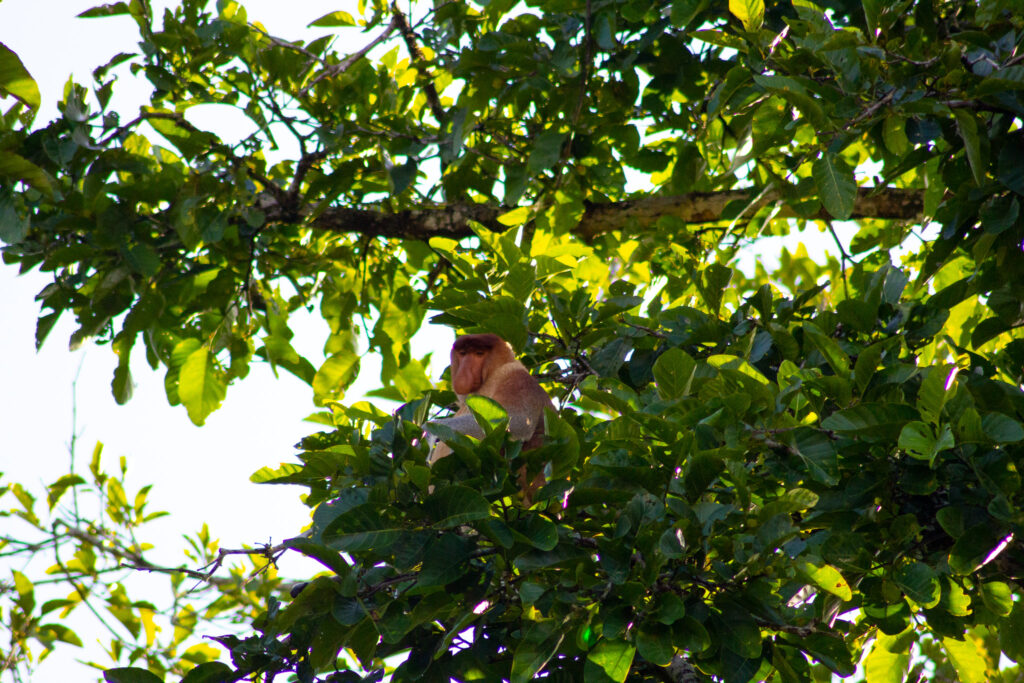
2) Hornbills
Hornbills are characterized by a long, down-curved bill that is frequently brightly colored and sometimes has a casque on the upper mandible. Hornbills resemble toucans but they are not related.
Many Asian hornbills are threatened by hunting and habitat loss, as they tend to require primary forest.
Fun Fact: A hornbill named Zazu is the king‘s adviser and one of the characters in The Lion King.
Wrinkled Hornbill
Black hornbill whose tail is mostly white with some black. Males have a yellow bill, and reddish casque while females have an all-yellow bill and casque.
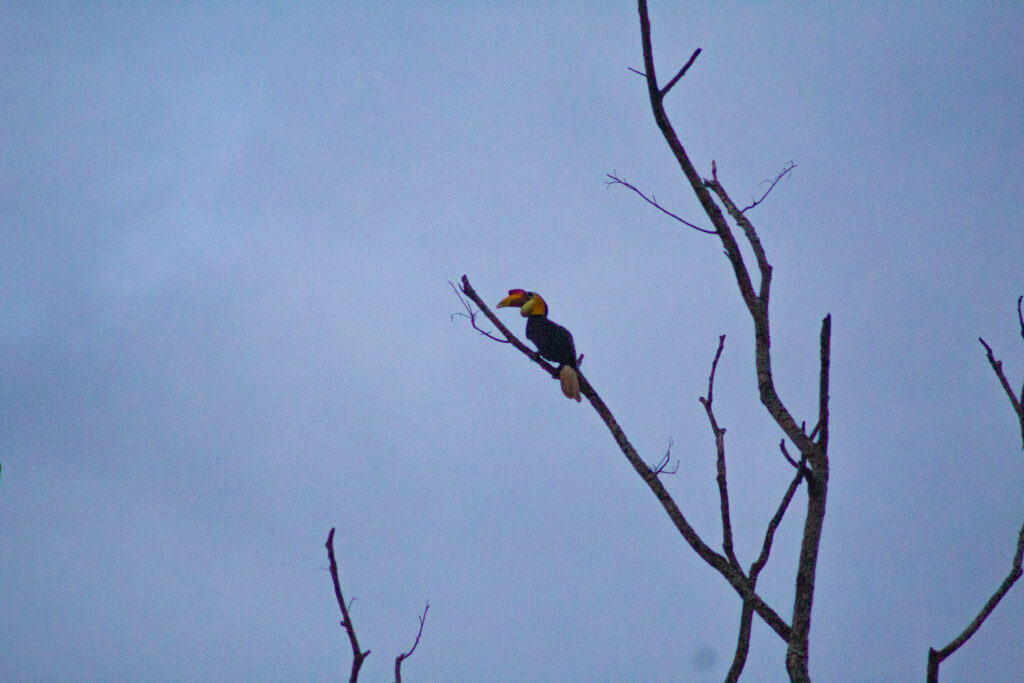
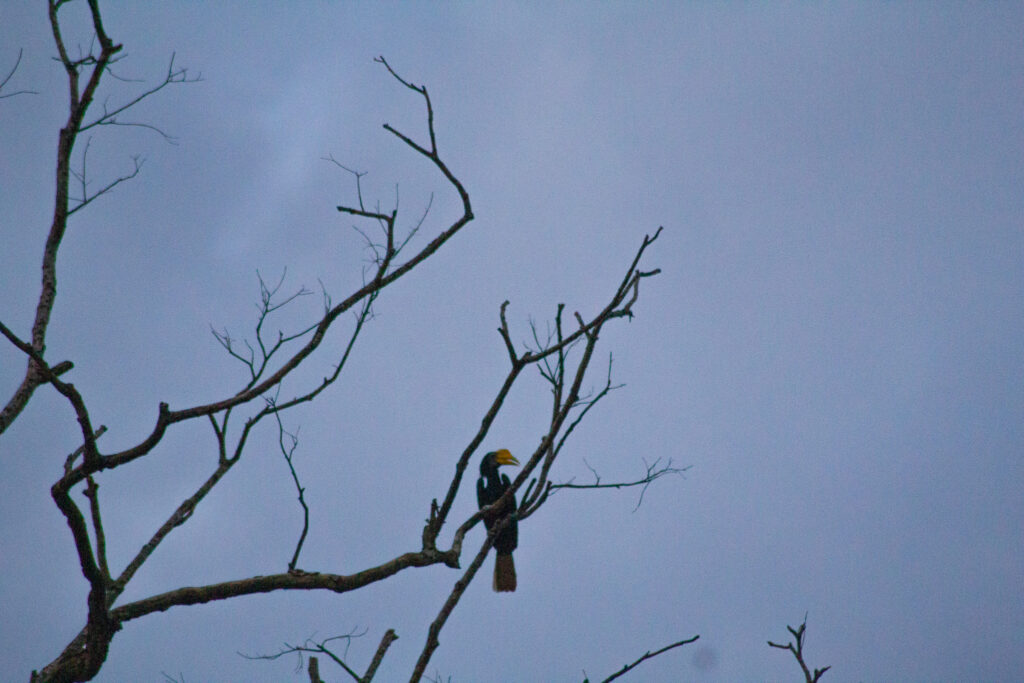
Wreathed hornbill
Black hornbill whose tail is all white with no black at the base. Both sexes have a pale bill with a small casque and a dark streak/mark on the throat pouch.
Rhinoceros hornbill
Frequently seen flying over the river in pairs. They have a colorful red and yellow bill with a “banana-shaped” casque on top of the bill. The long white tail has a broad, black band near the center. They have a loud, barking-like call.

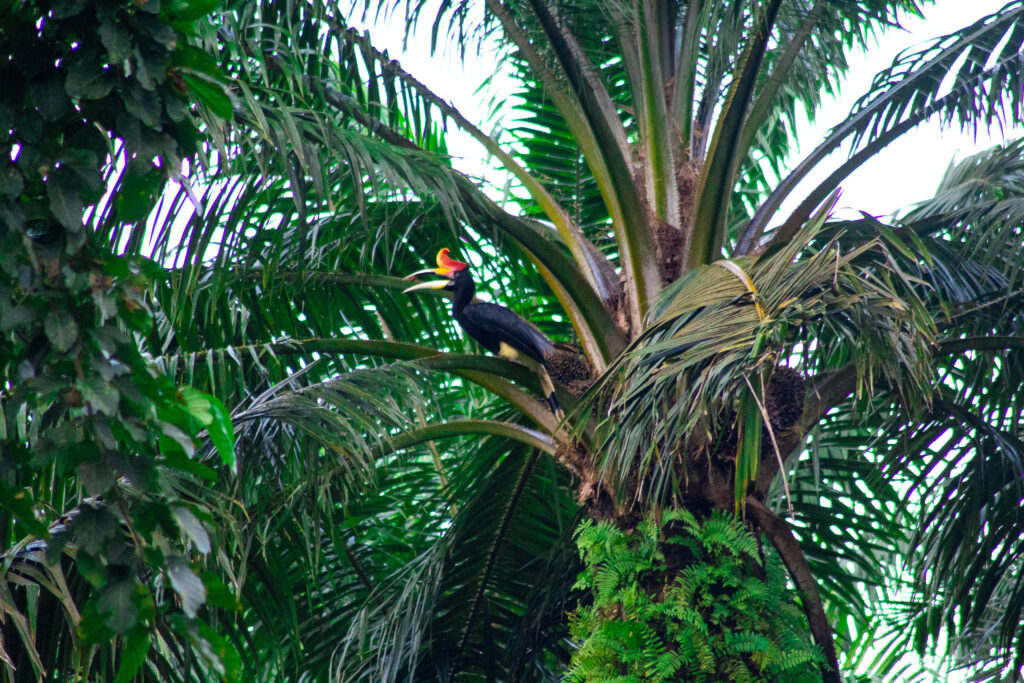
Black hornbill
This species is similar in size to the Oriental pied hornbill. Note the all black plumage with white tips on outer tail feathers. The males have a very large whitish-yellow bill; the females have black bills with smaller casques. Some birds have a streak of feathers on the side of their heads that is white/grey in color
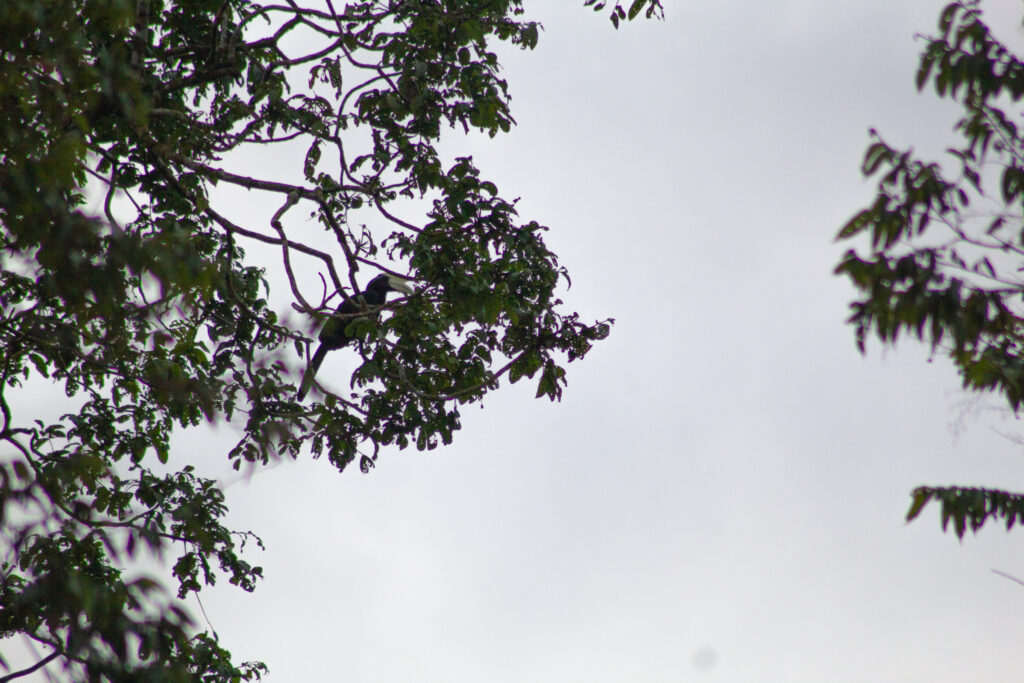
White-crowned hornbill
The most distinctive field marks of this species are the white, spiky, pointed crest atop the head and long white tail. Males have a white head, neck and belly whereas females are black in these areas. This hornbill is more secretive and keeps to the lower vegetation along the river. They are co-operative breeders and are frequently seen in small family groups.
Helmeted hornbill
Perhaps the most unique and least observed hornbill in the area. It is mostly dark brown with white and very long tail feathers that distinguish it from all other hornbills. The bill is short and red in color with a square-shaped solid casque. They sound like gibbons calling.
Oriental pied hornbill
This smaller hornbill is black with a white belly. The bill and casque are mostly pale yellow with black at the base. This is often the most frequently seen hornbill around villages and surrounding areas.
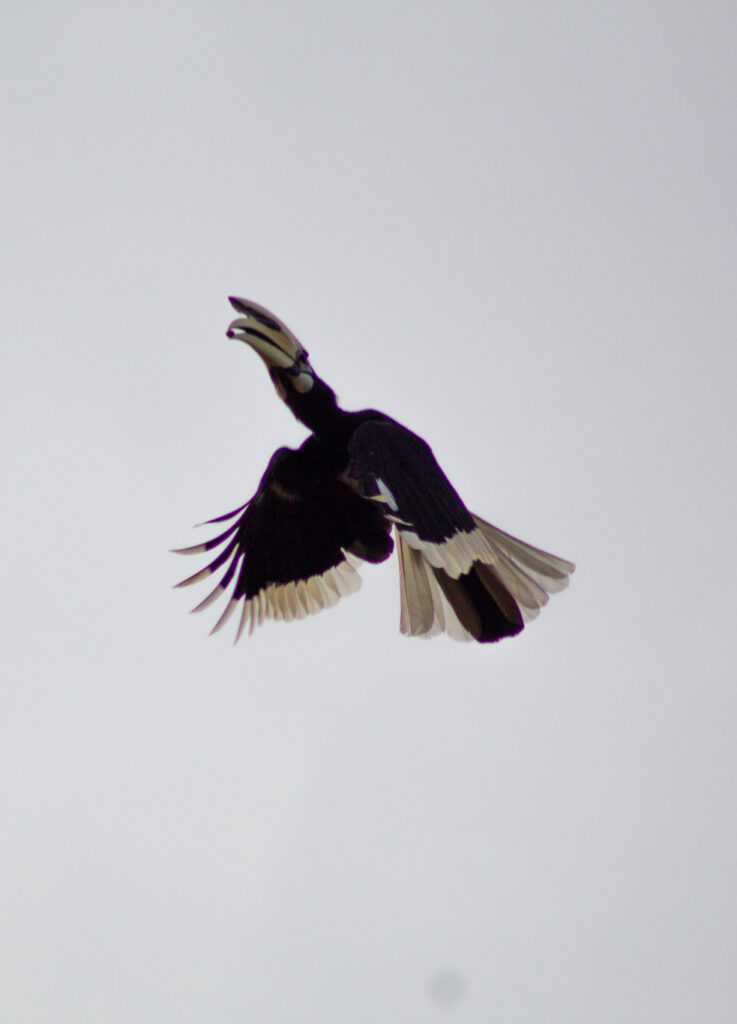
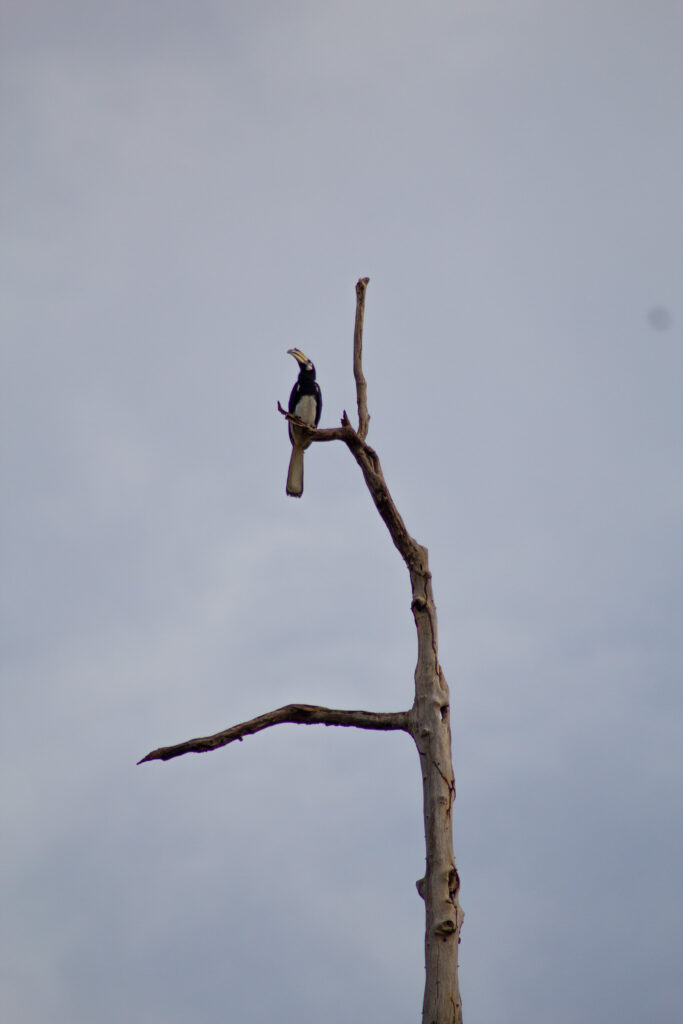
Bushy-crested hornbill
This is a medium-sized dark brown species with a light brown base to the tail. Males have a black bill while that of females is mostly yellowish. Since they are cooperative breeders, they are frequently seen in small family groups averaging seven birds.
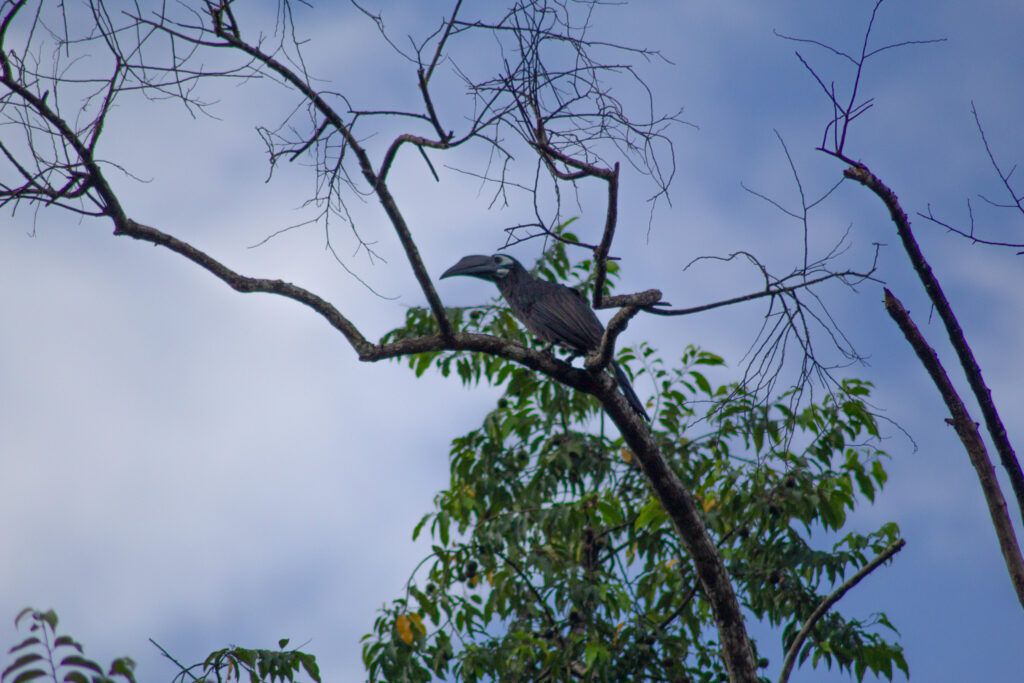
3) Macaque monkeys
A lot of Macaque species can be seen on the river! Remember to not show your teeth or to look them in the eyes.
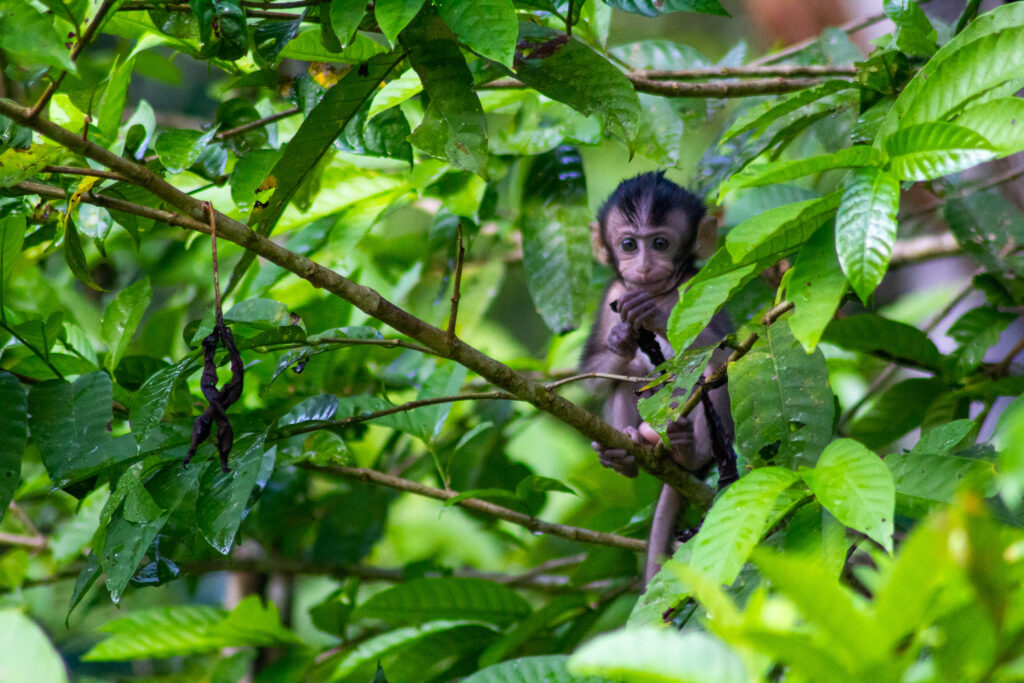

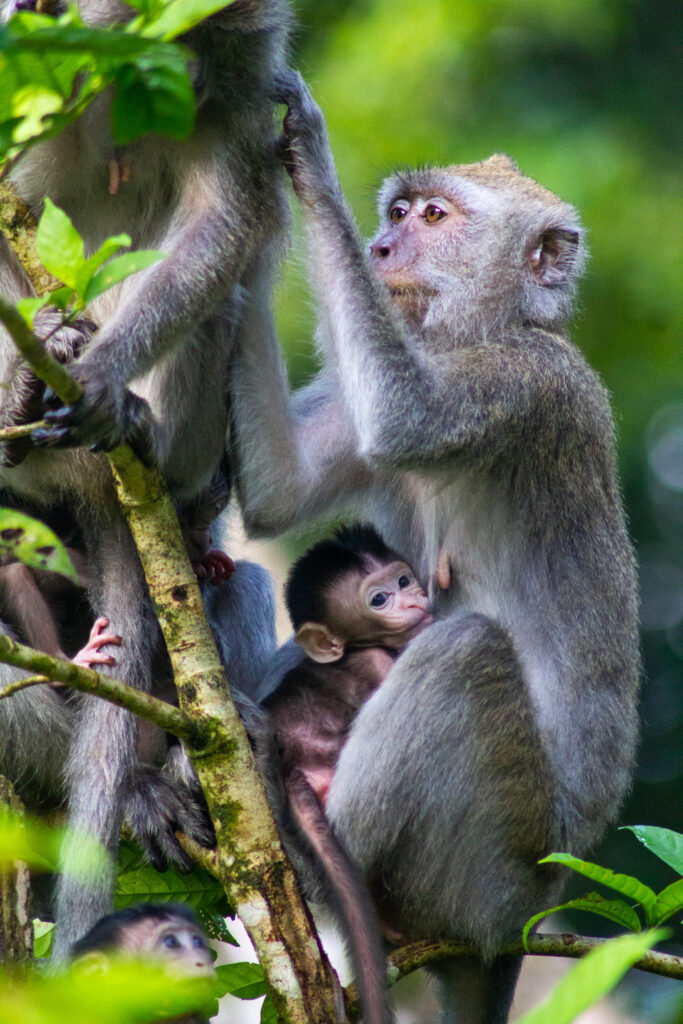
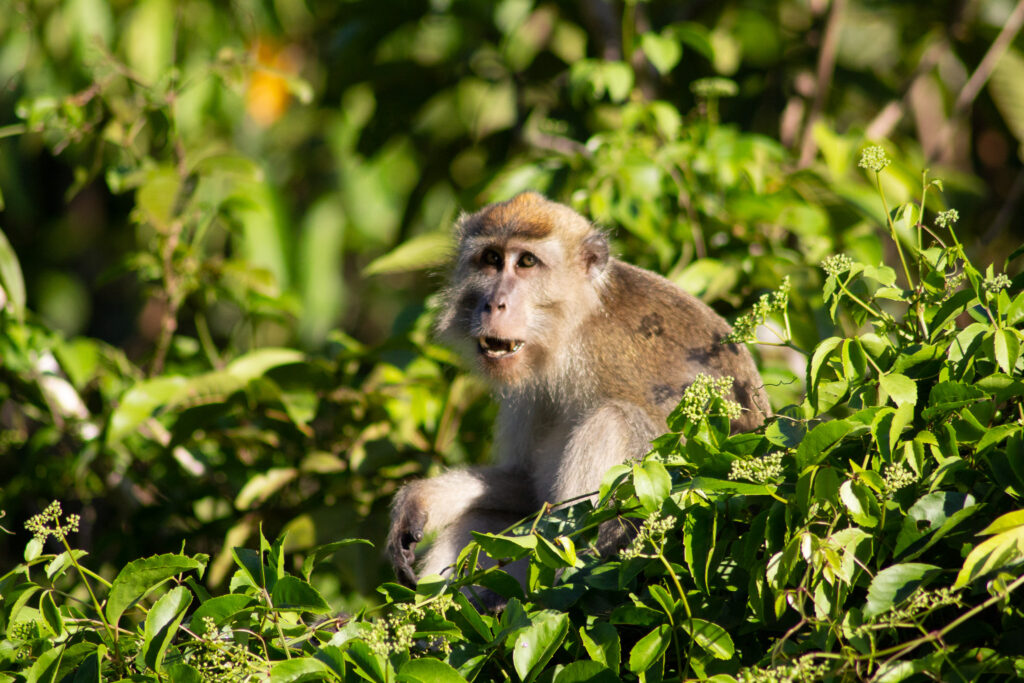
6) Bornean pygmy elephants
At the end of our afternoon safari, we were able to spot a herd of pygmy elephants, which are quite rare to spot because they usually hide away from the banks of the river. We only saw them for a couple of minutes before they disappeared.
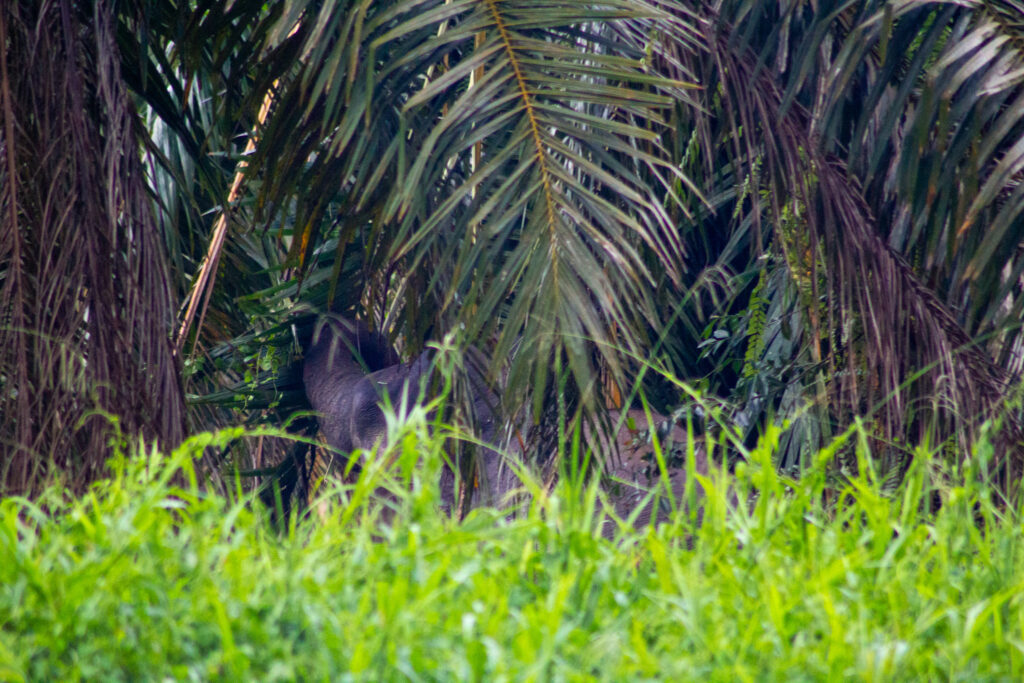
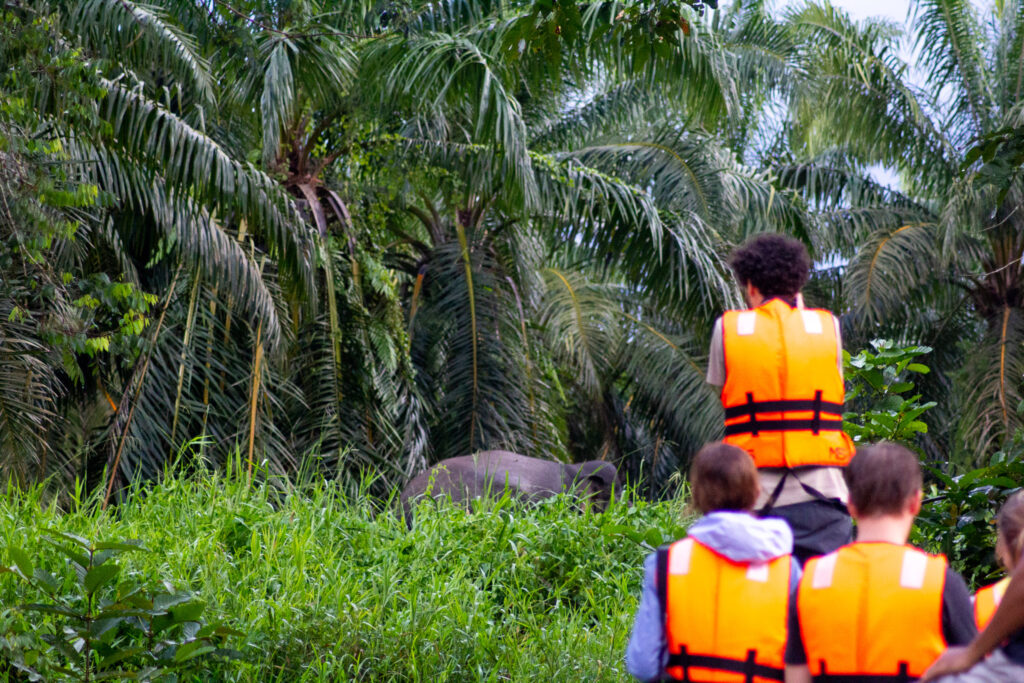
7) Crocodiles
We’ve seen two big Bornean Crocodiles and two baby crocs in the river.
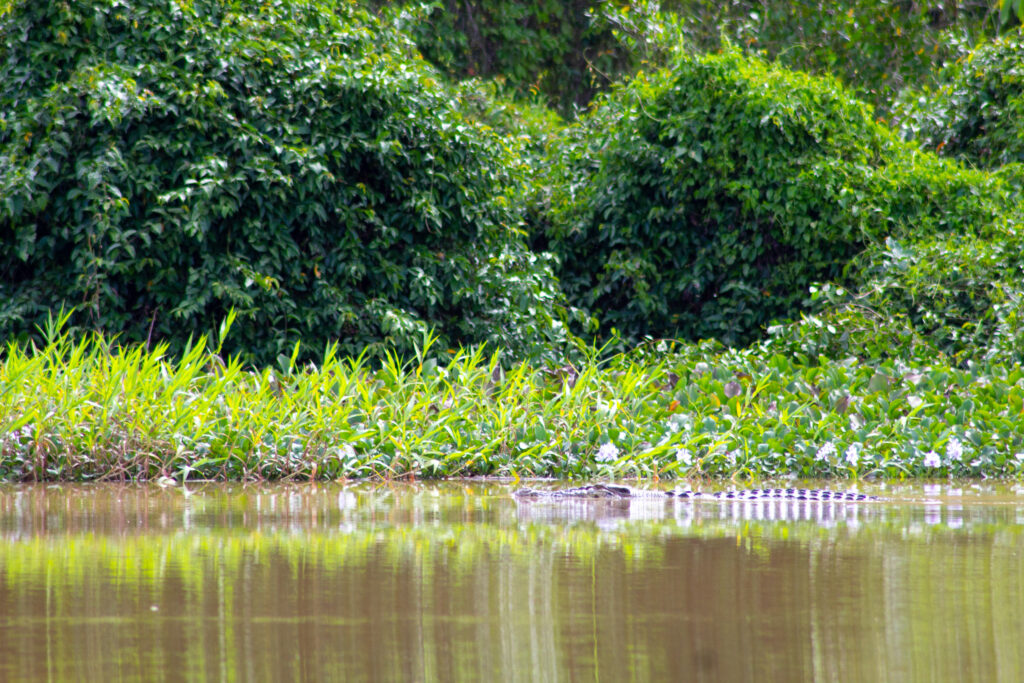
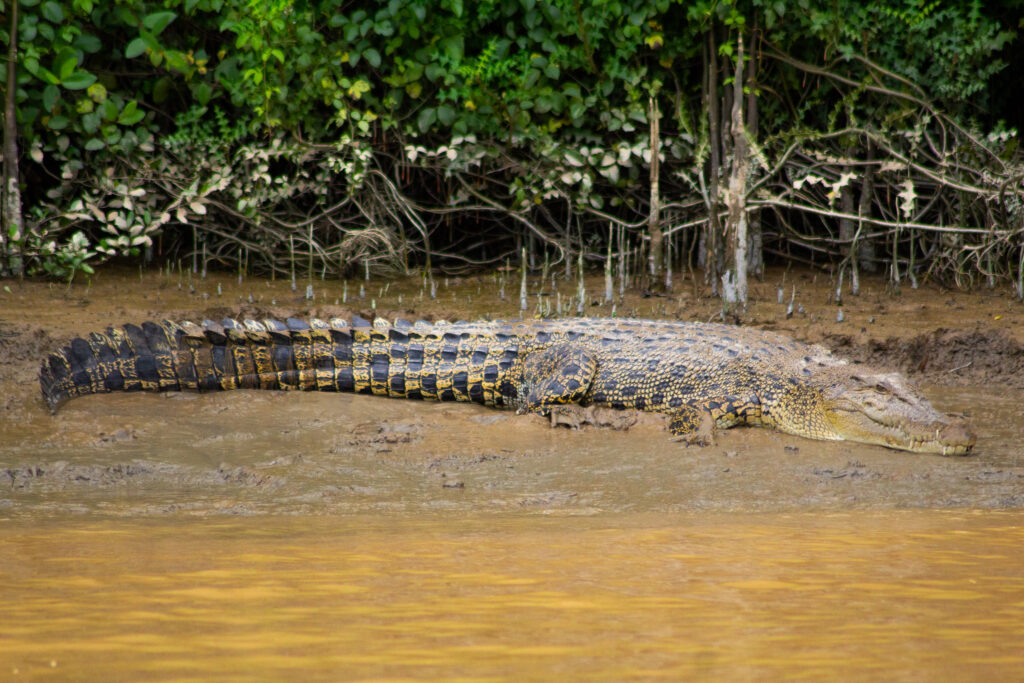
8) Sunda Clouded Leopard
During our night safari, we could see two Sunda clouded leopards. But once we put our flashlights on them they quickly hide behind branches in the tree.
9) Orangutan
We were in our villa when our guide came knocking telling us that an orangutan was spotted on the boardwalk. We immediately ran towards the spot and admired the Orangutan for an hour before he disappeared in the jungle. He was swinging from the branches like a gymnast, eating his leaves and wasn’t bothered by us. At one point he was 2 meters from us! A memory I’m cherishing for life! Bucketlist-item crossed off!
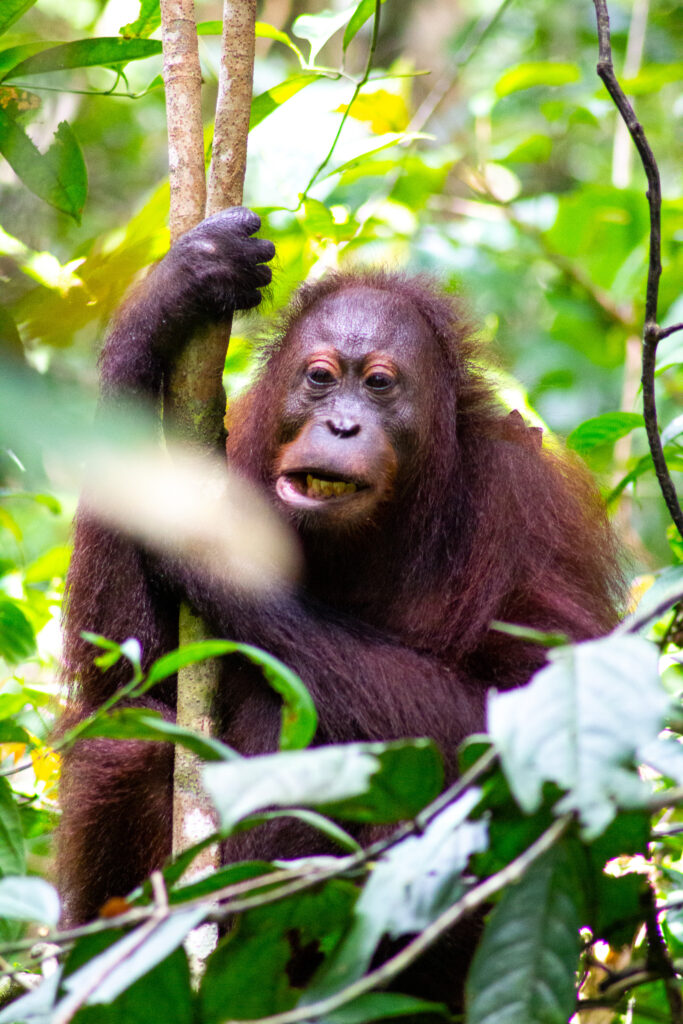
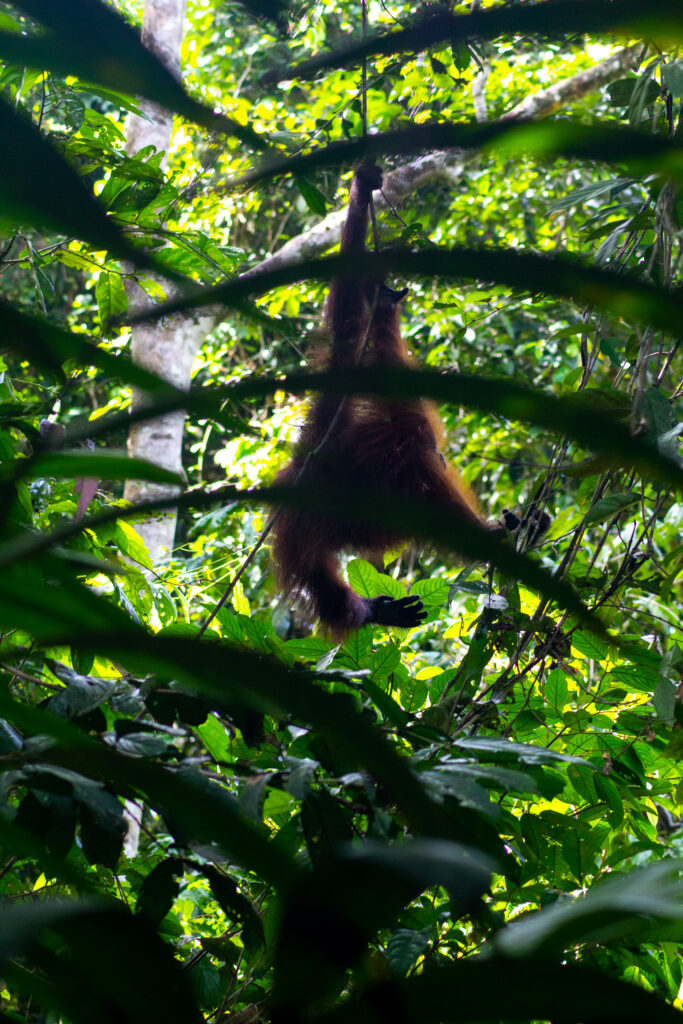
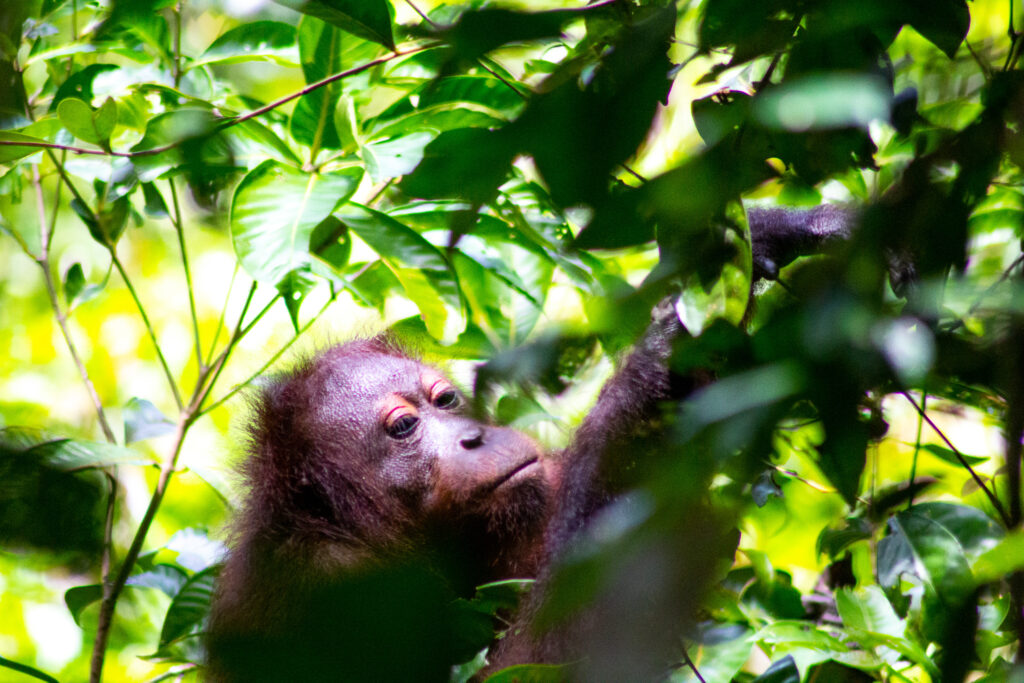
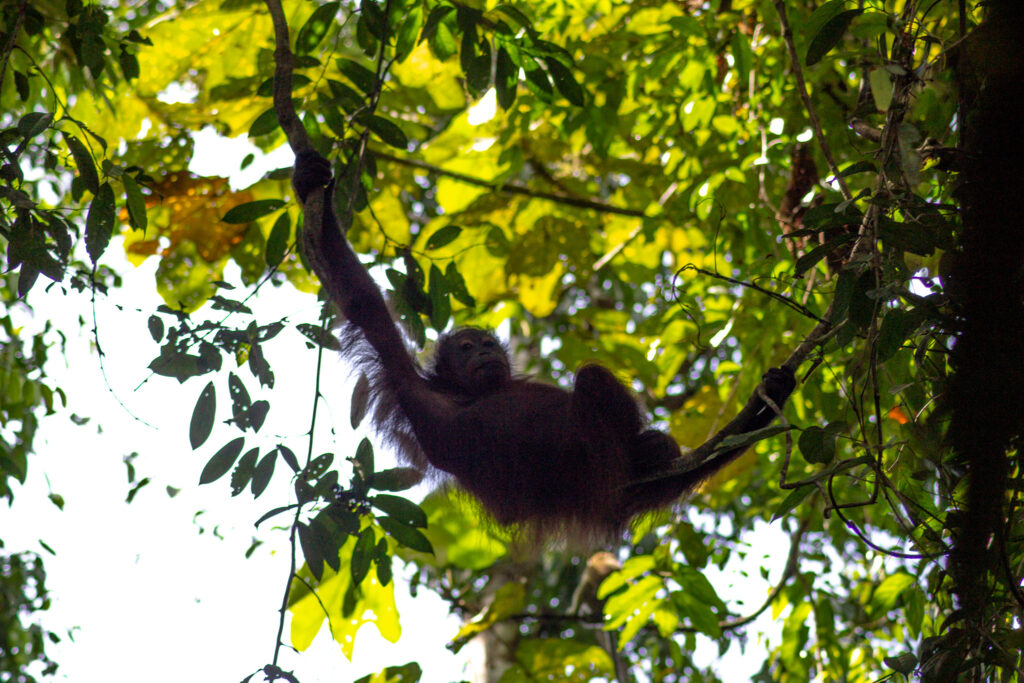
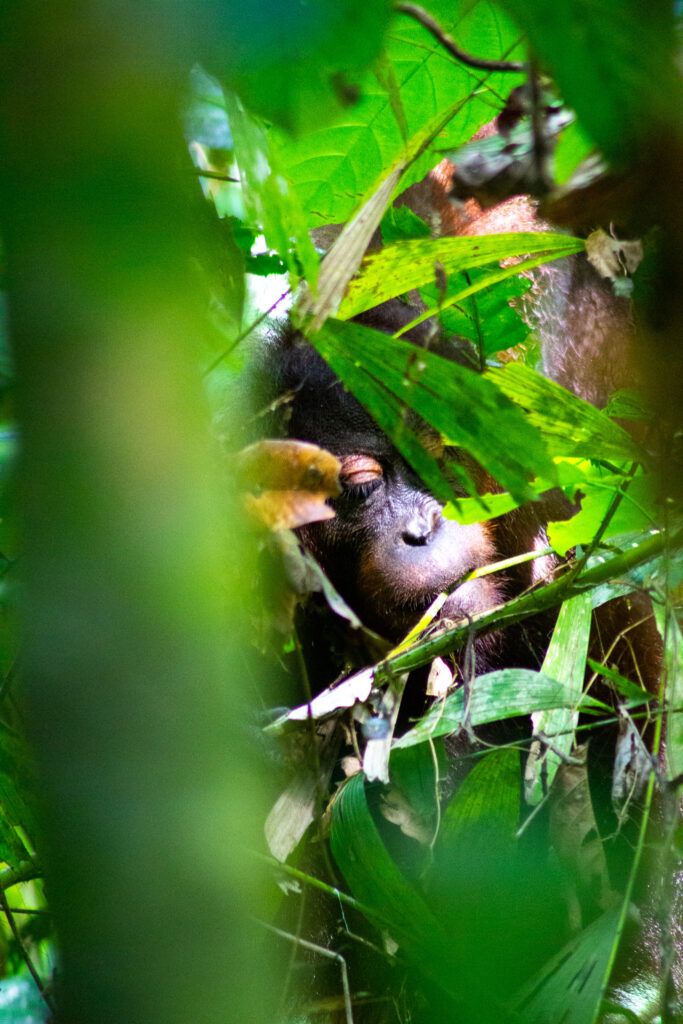
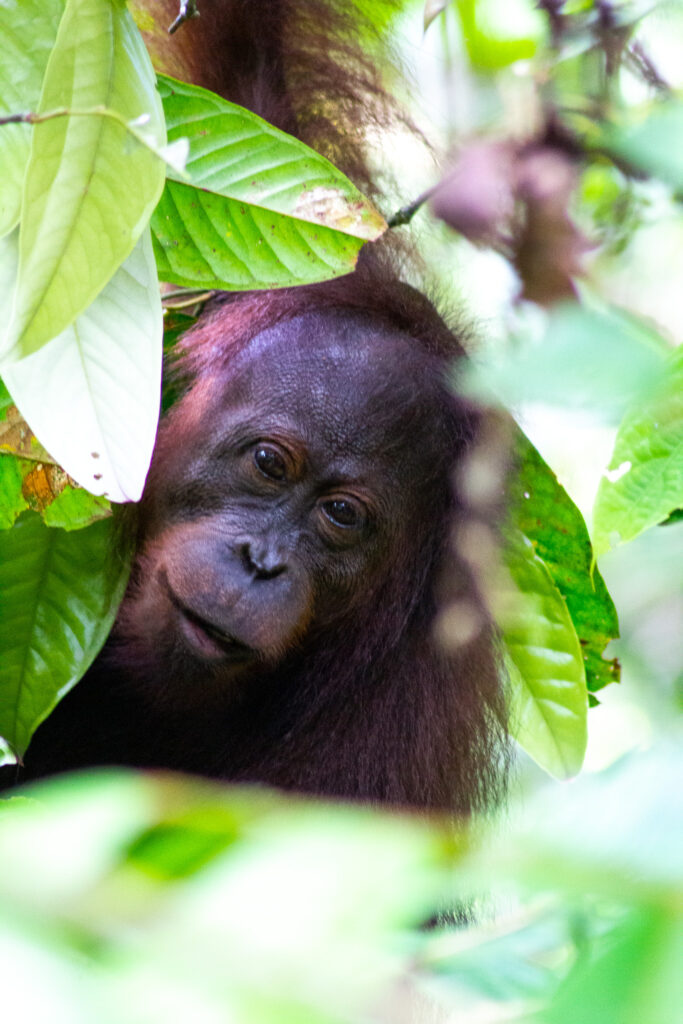
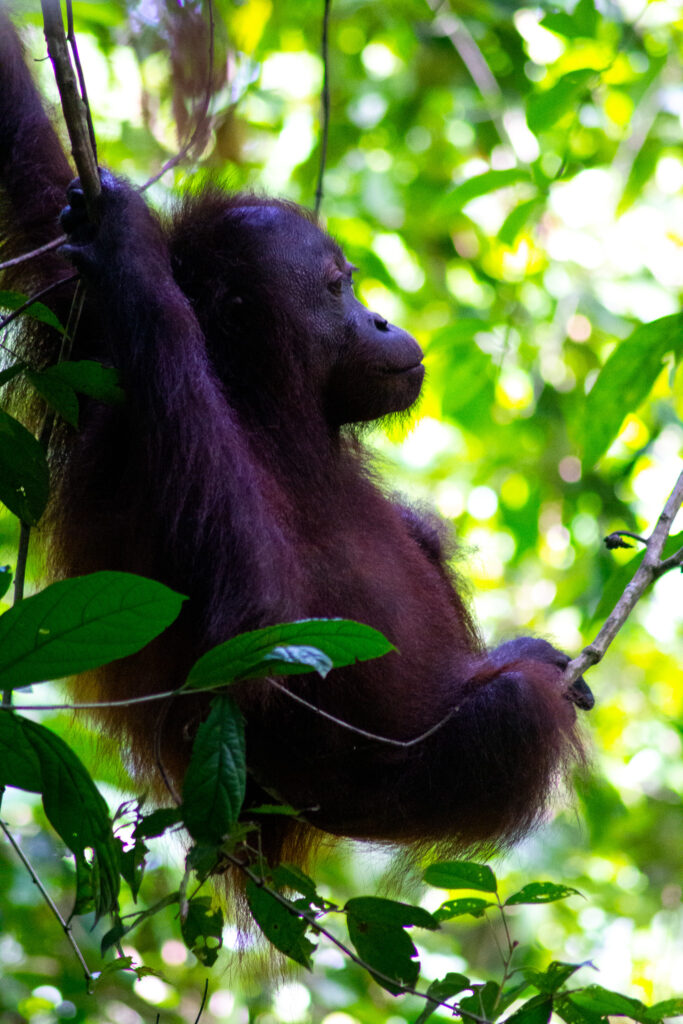
10) Owl
During the night safari, we saw an owl! He was really not impressed by us.
11) Snake
During our night safari, we also saw 2 snakes!

12) Birds
Kingfishers can be spotted as the most brightly colored birds on the river.
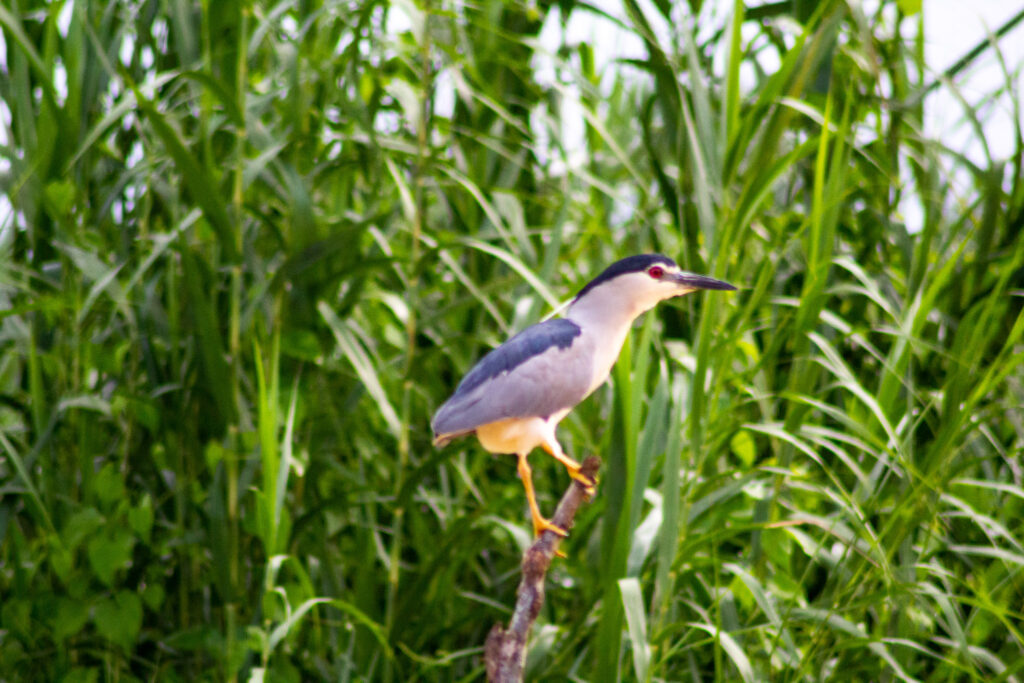
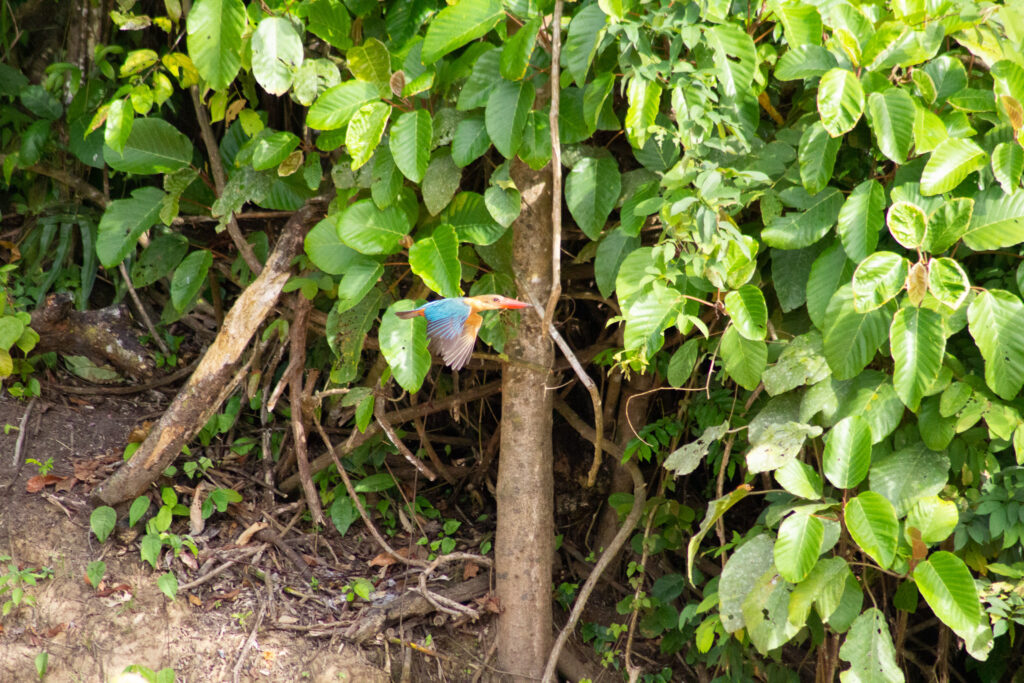
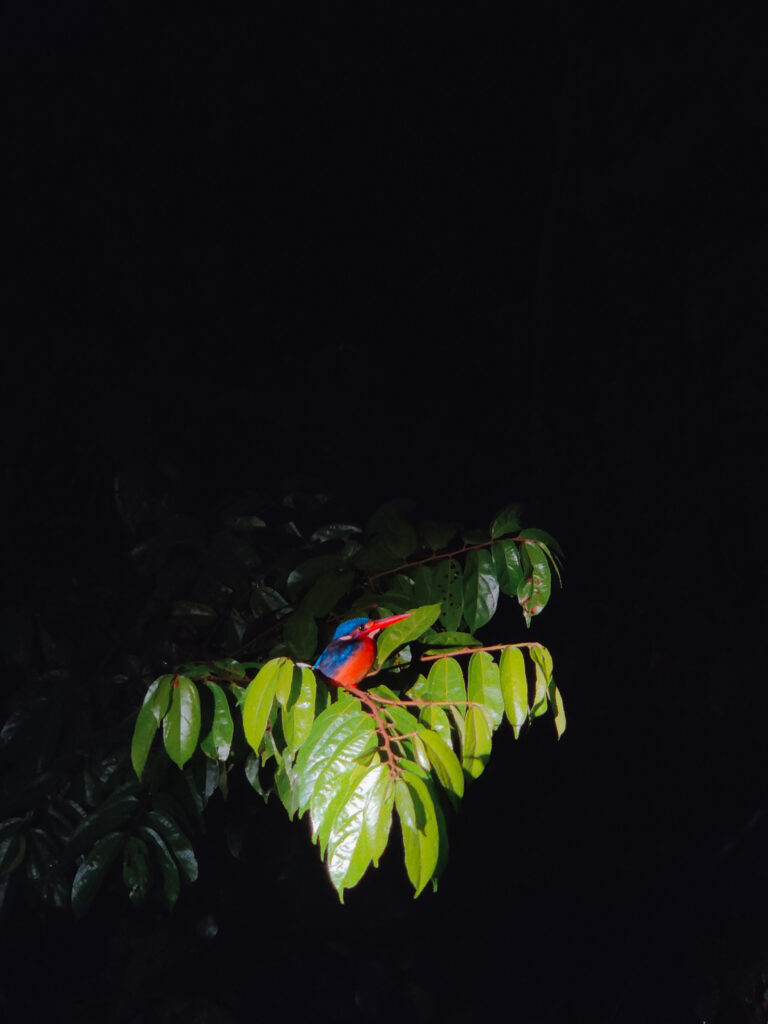
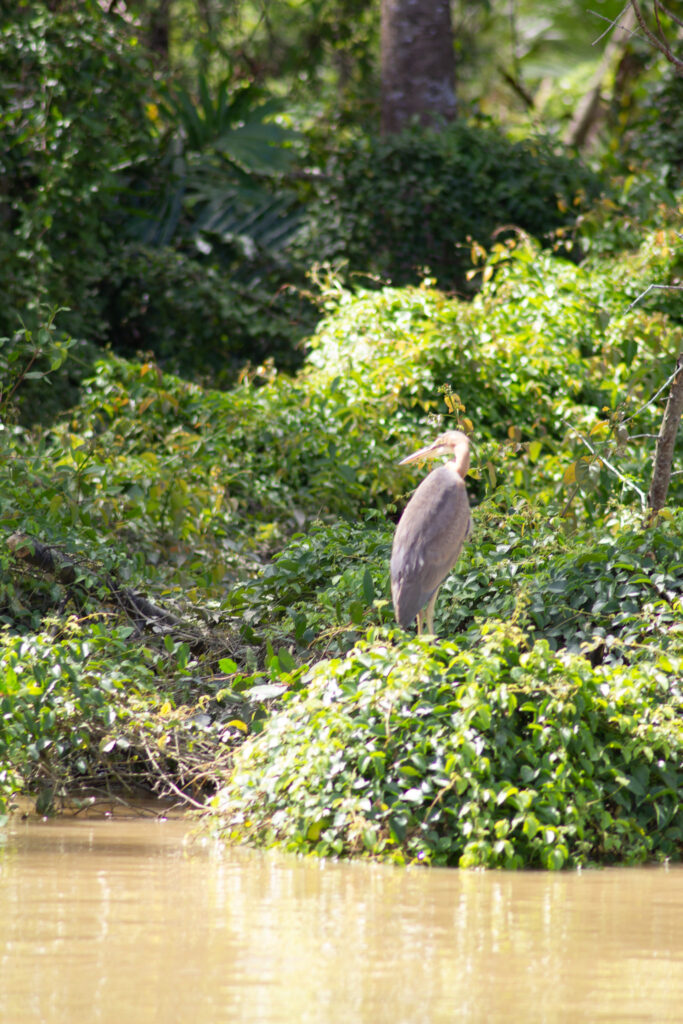
13) Flying Lemur
Although it is called “flying lemur”, it is not a lemur and does not fly. Instead, it glides as it leaps among trees.
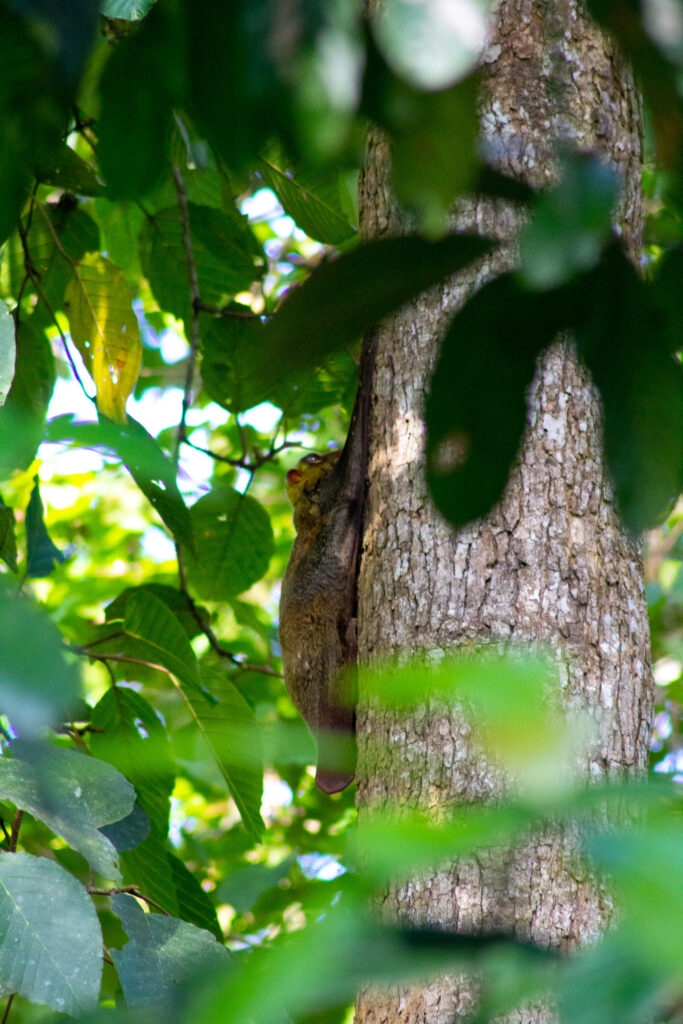
14) Cream-coloured giant squirrel
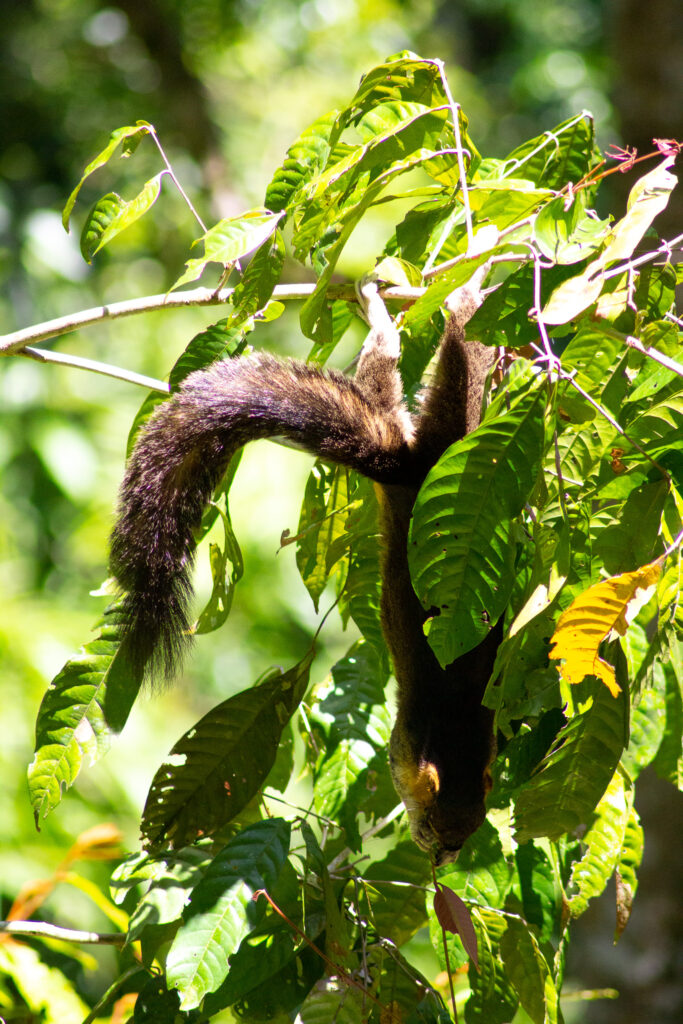
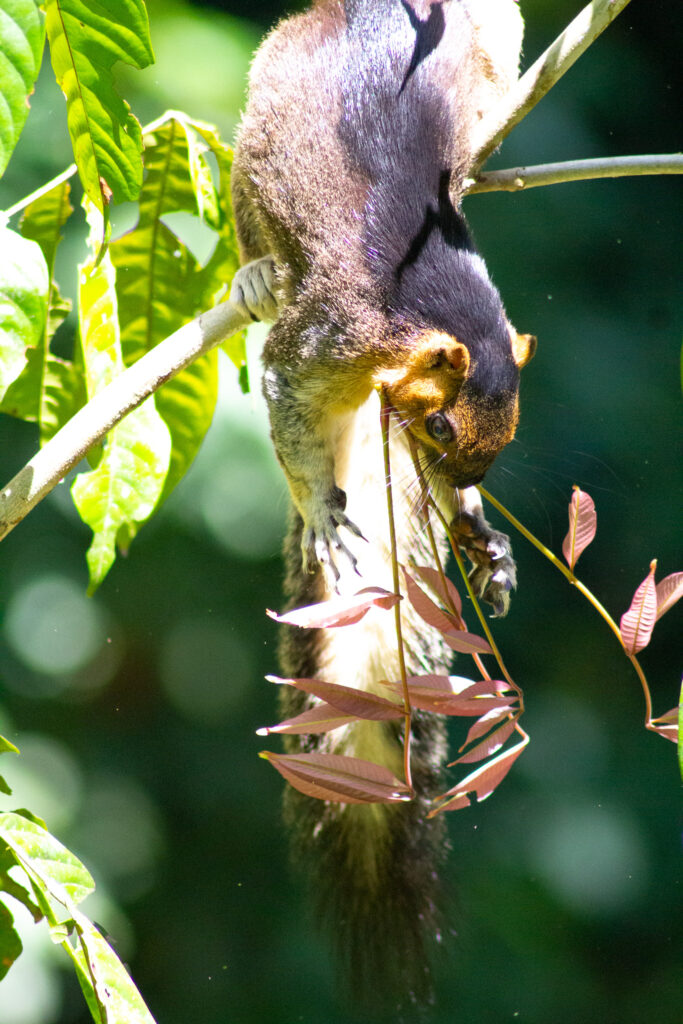
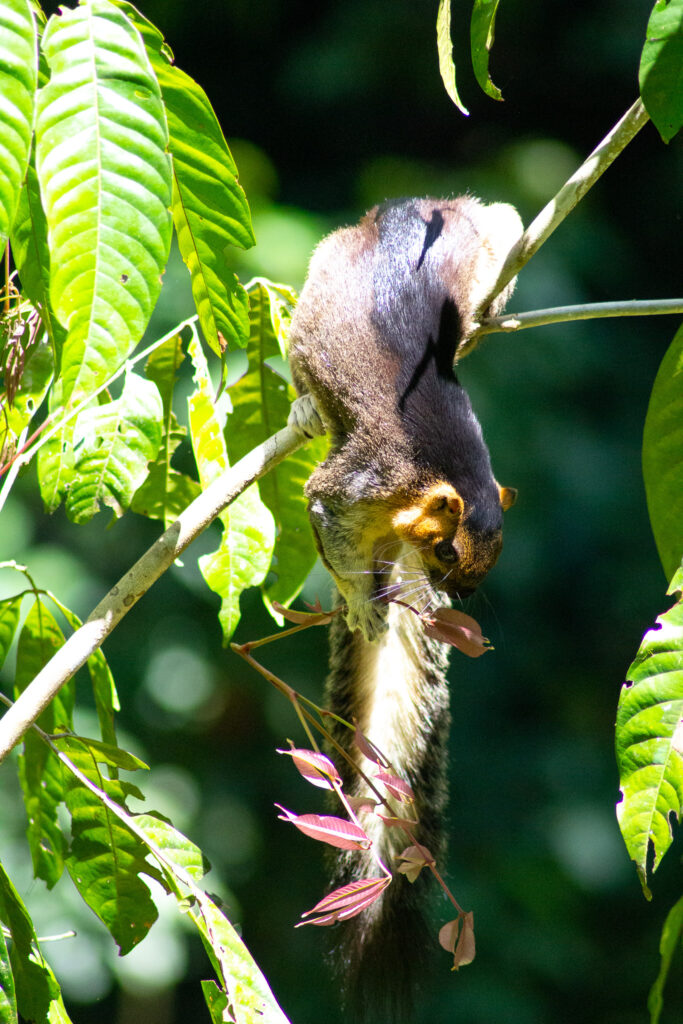
15) Grey-headed Fish Eagle
This species is widespread through south and south-east Asia, but is nowhere common. In Borneo, it is considered scarce.
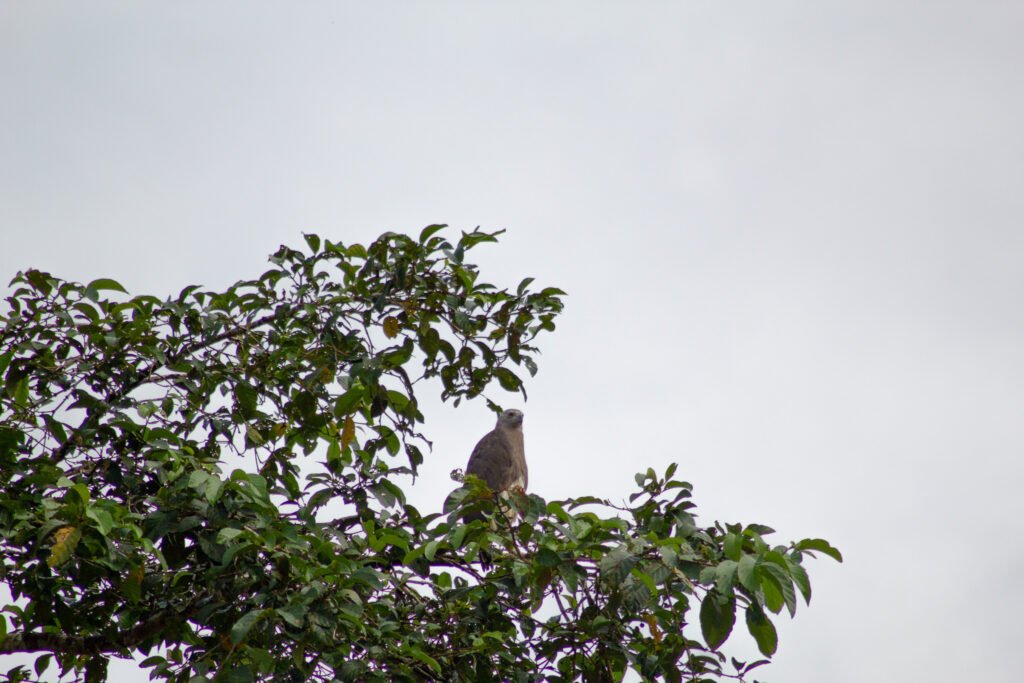

16) Crested Serpent Eagle
As its name suggests it specializes in snakes, hunting over the forest canopy.
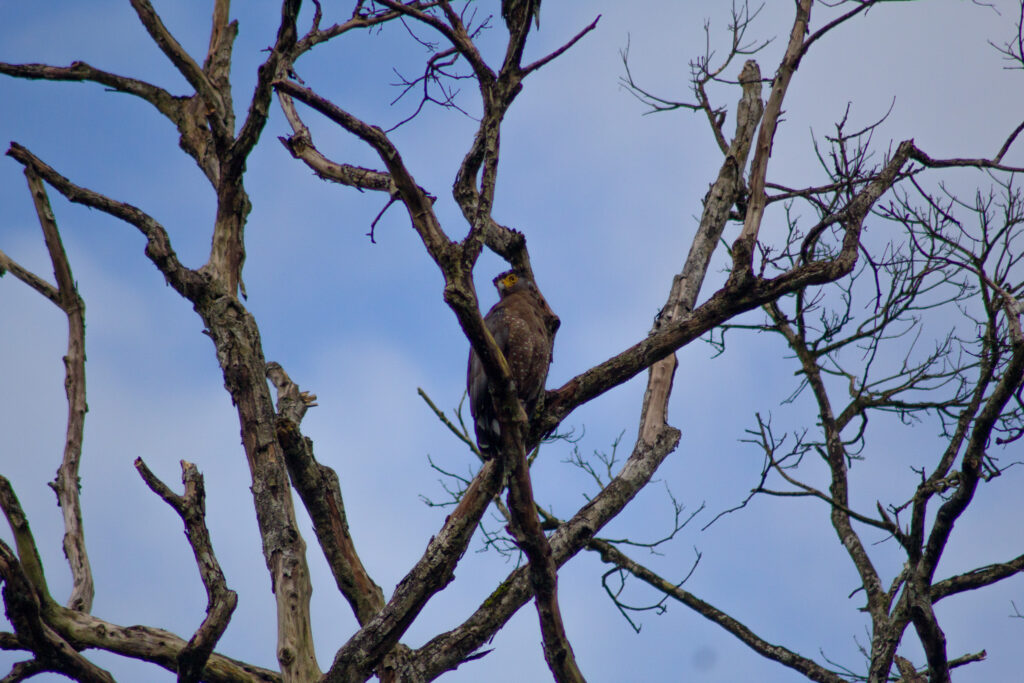
17) White-fronted Falconets
The world’s smallest falcon!
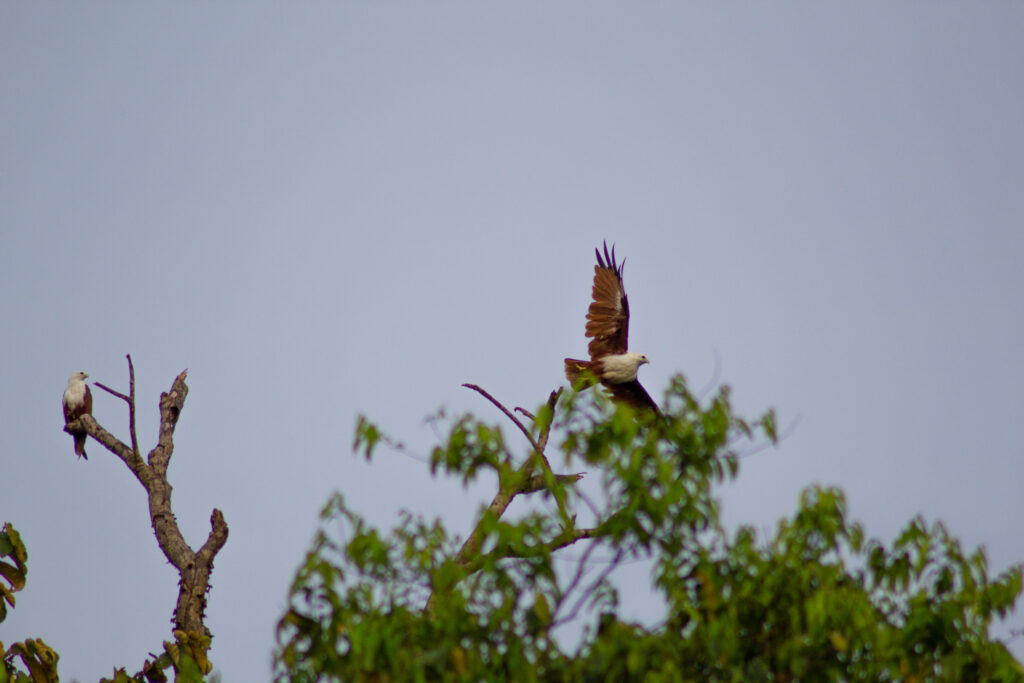
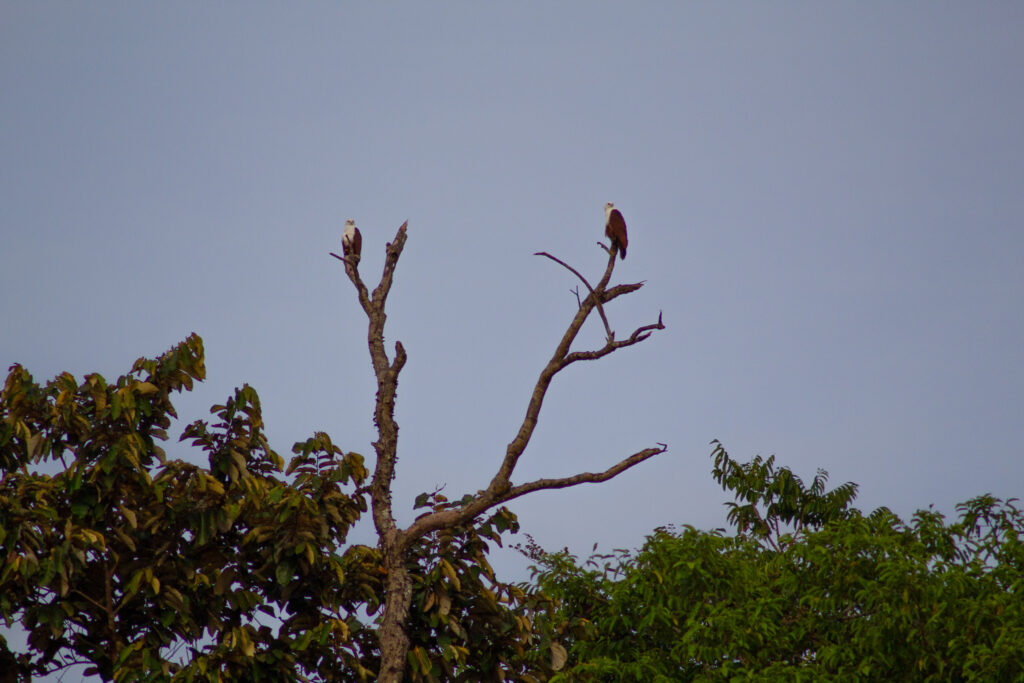
This safari was so wonderful and adventurous! We were so lucky to see all of the above animals. We returned to our lodge with big smiles on our faces.
I hope these tips will help you with your river safari in Borneo and that the photos have given you a taste of what a safari in Borneo could be!
Life of a Passion



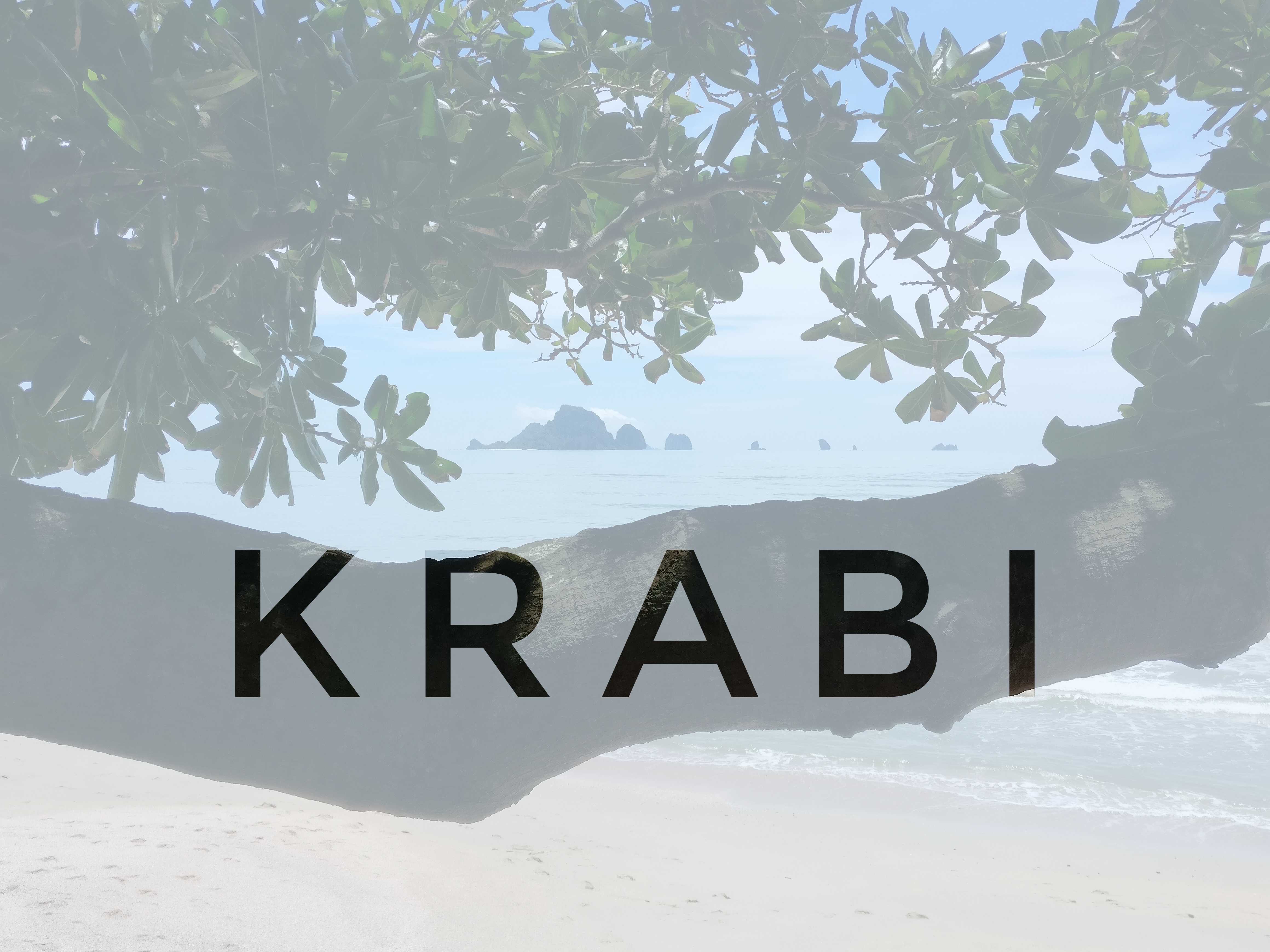
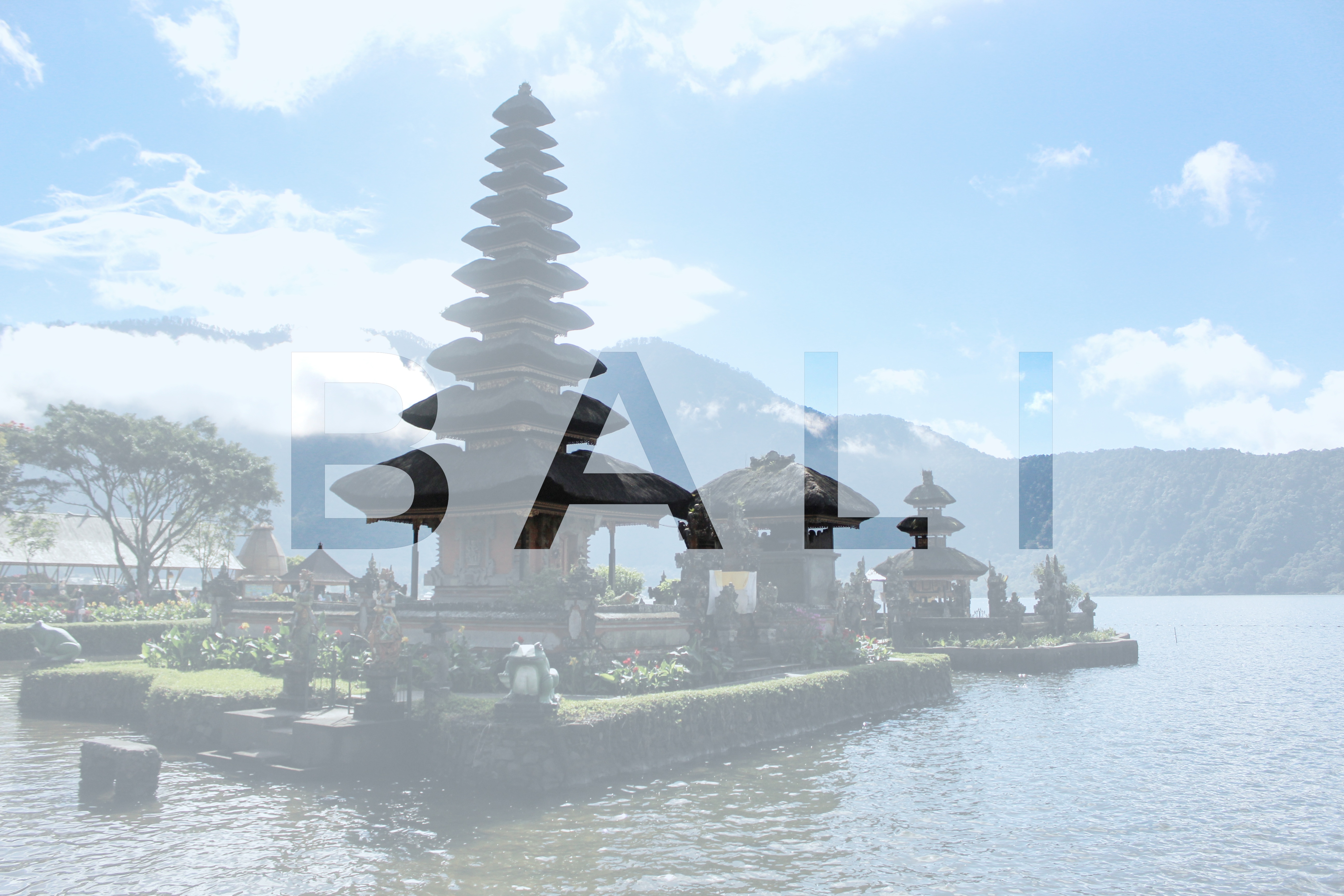

4 Comments
Pingback:
Pingback:
Maaike
Prachtige blog, ik voelde me zelf even op safari in Borneo! 🙂 Mijn favoriet is toch wel de Orangutan.
Life of a Passion
Dankje Maaike! Mijn persoonlijke favoriet is ook de Orangutan! 😍